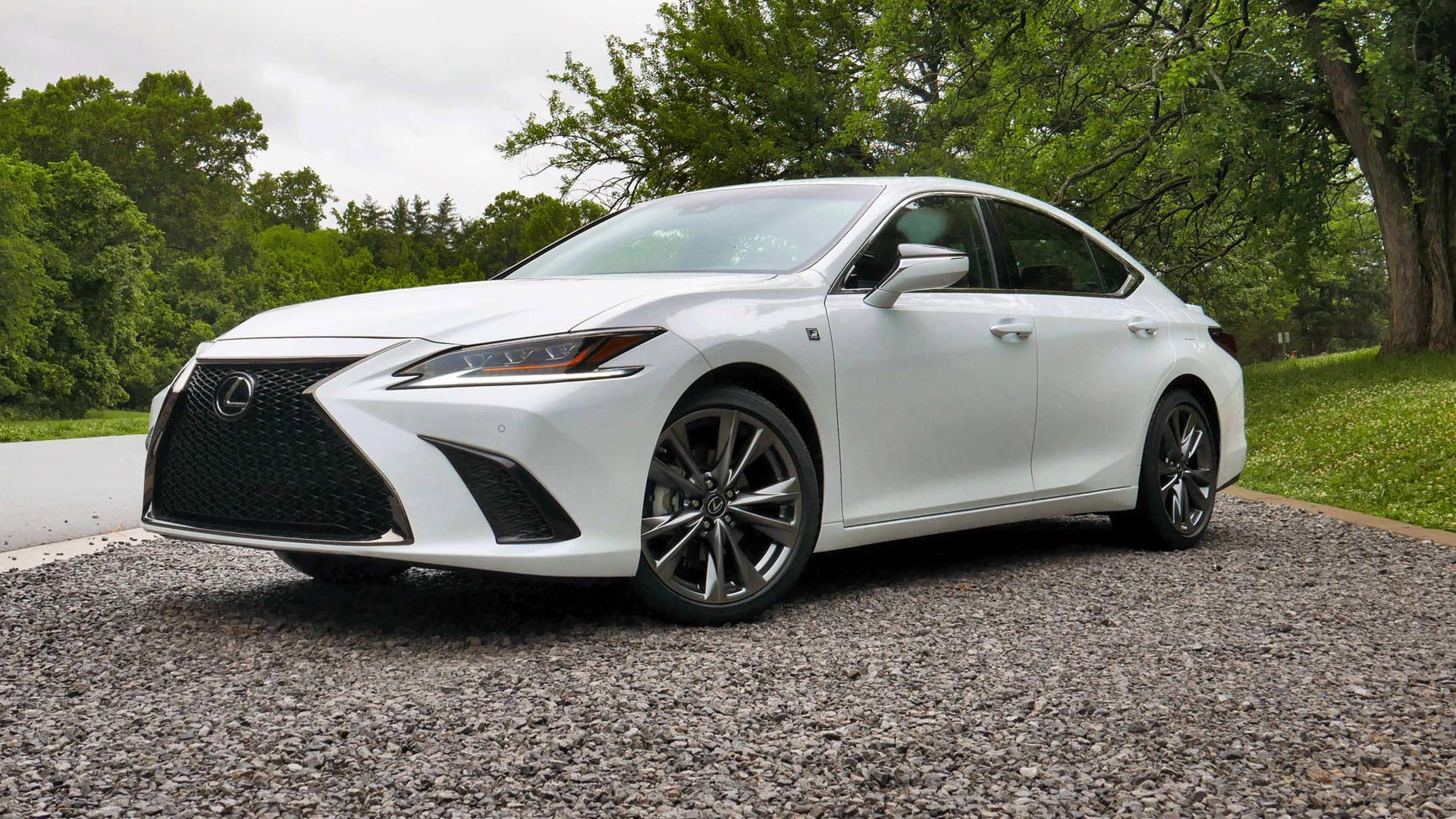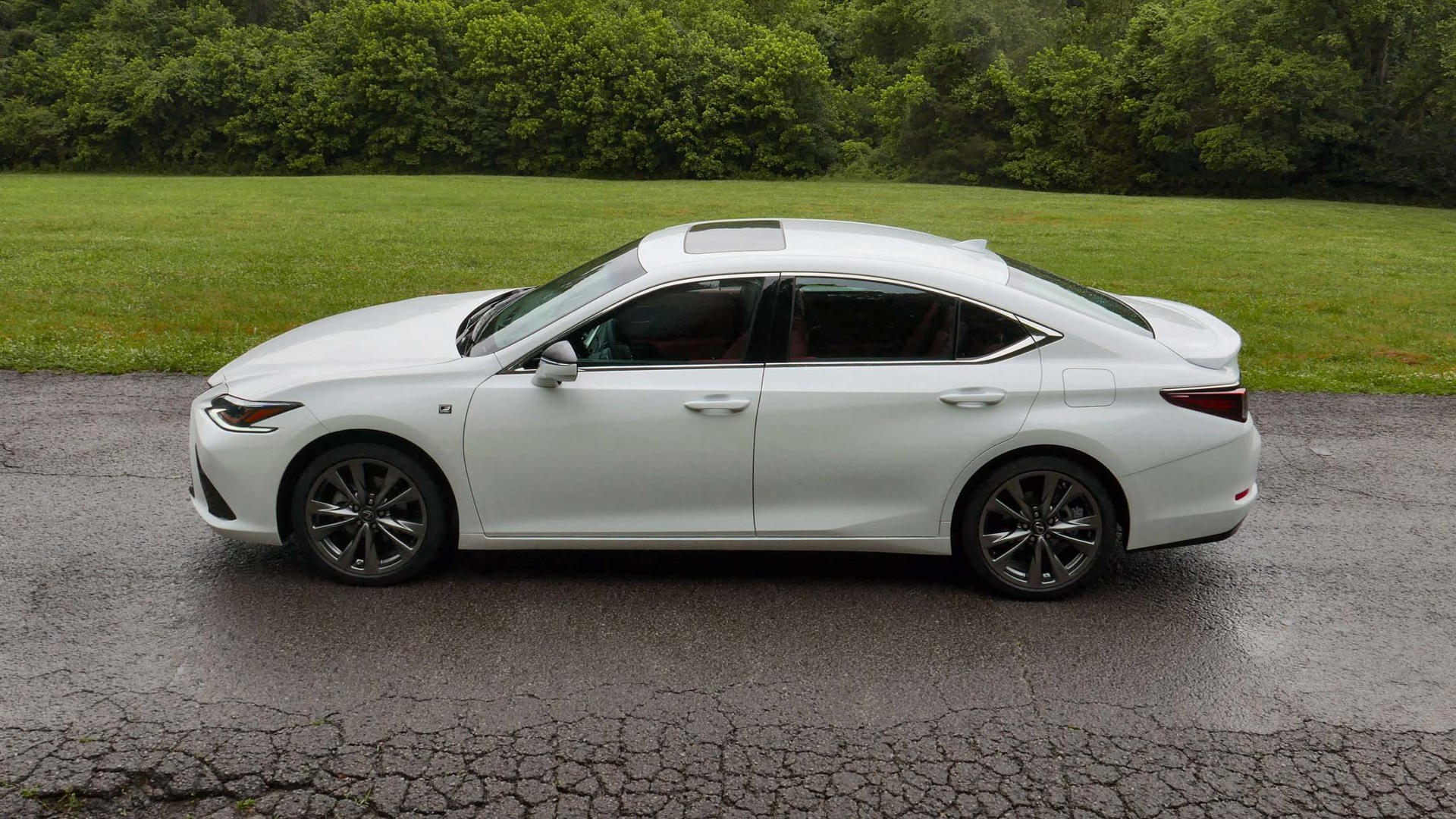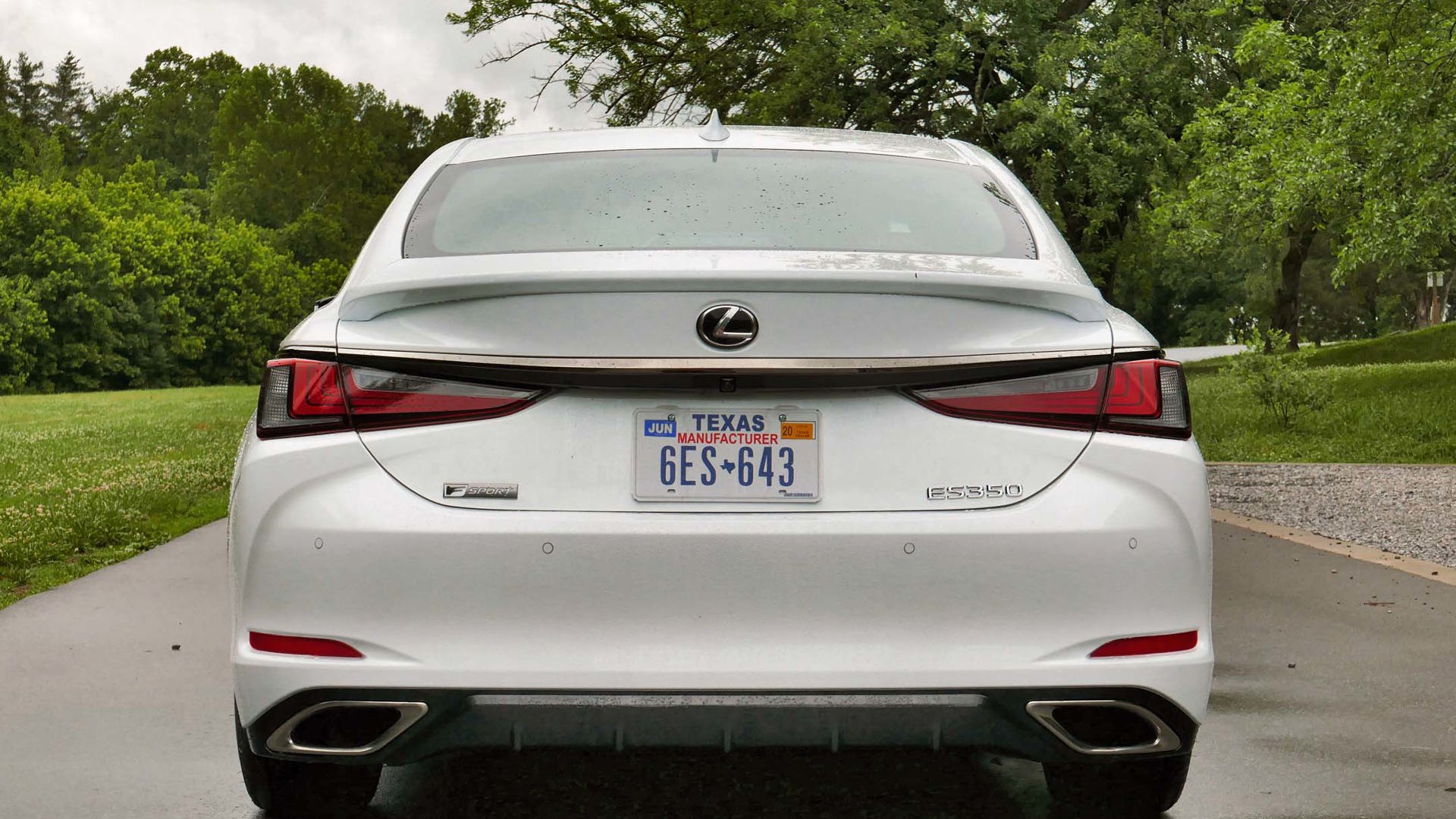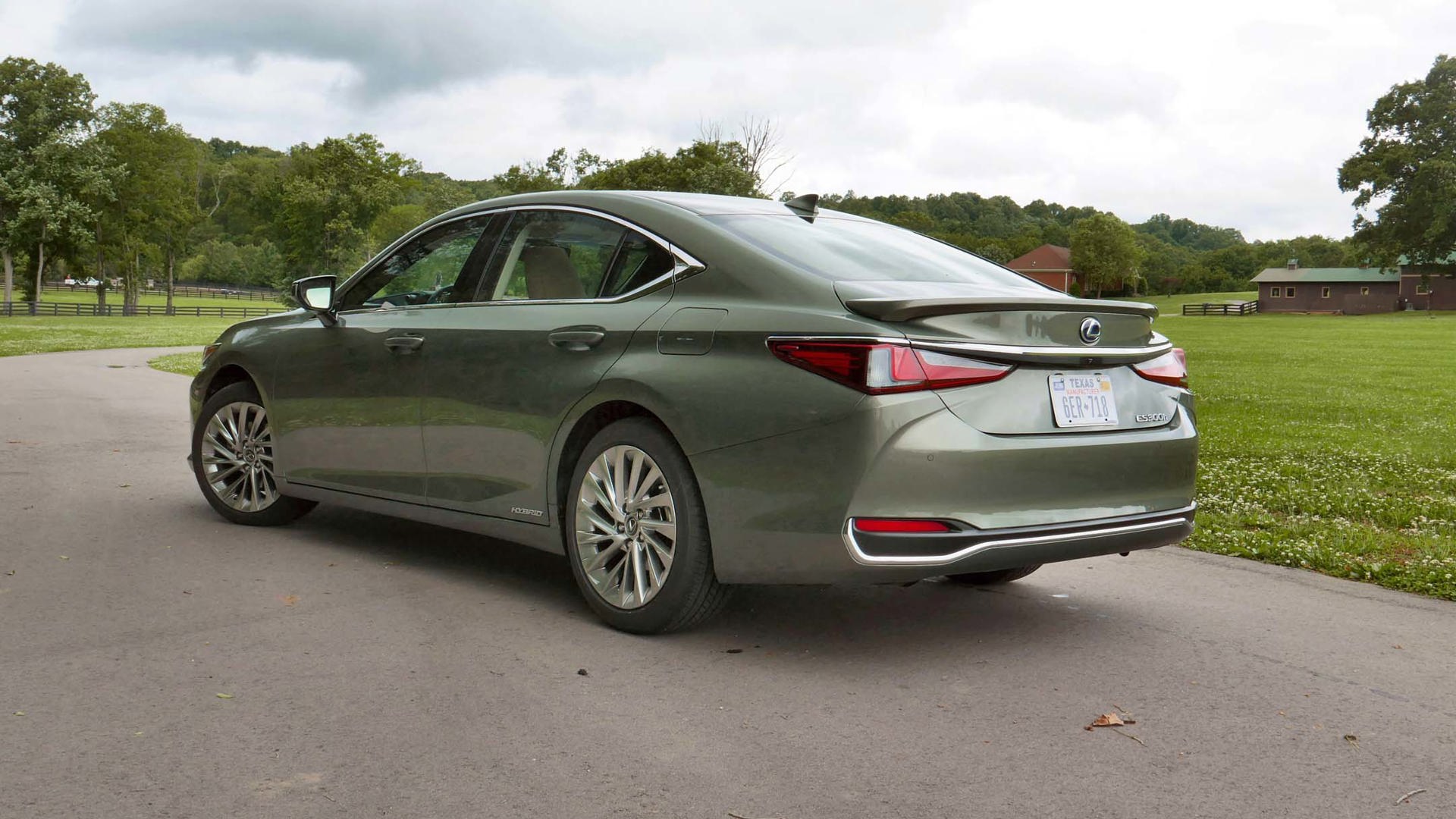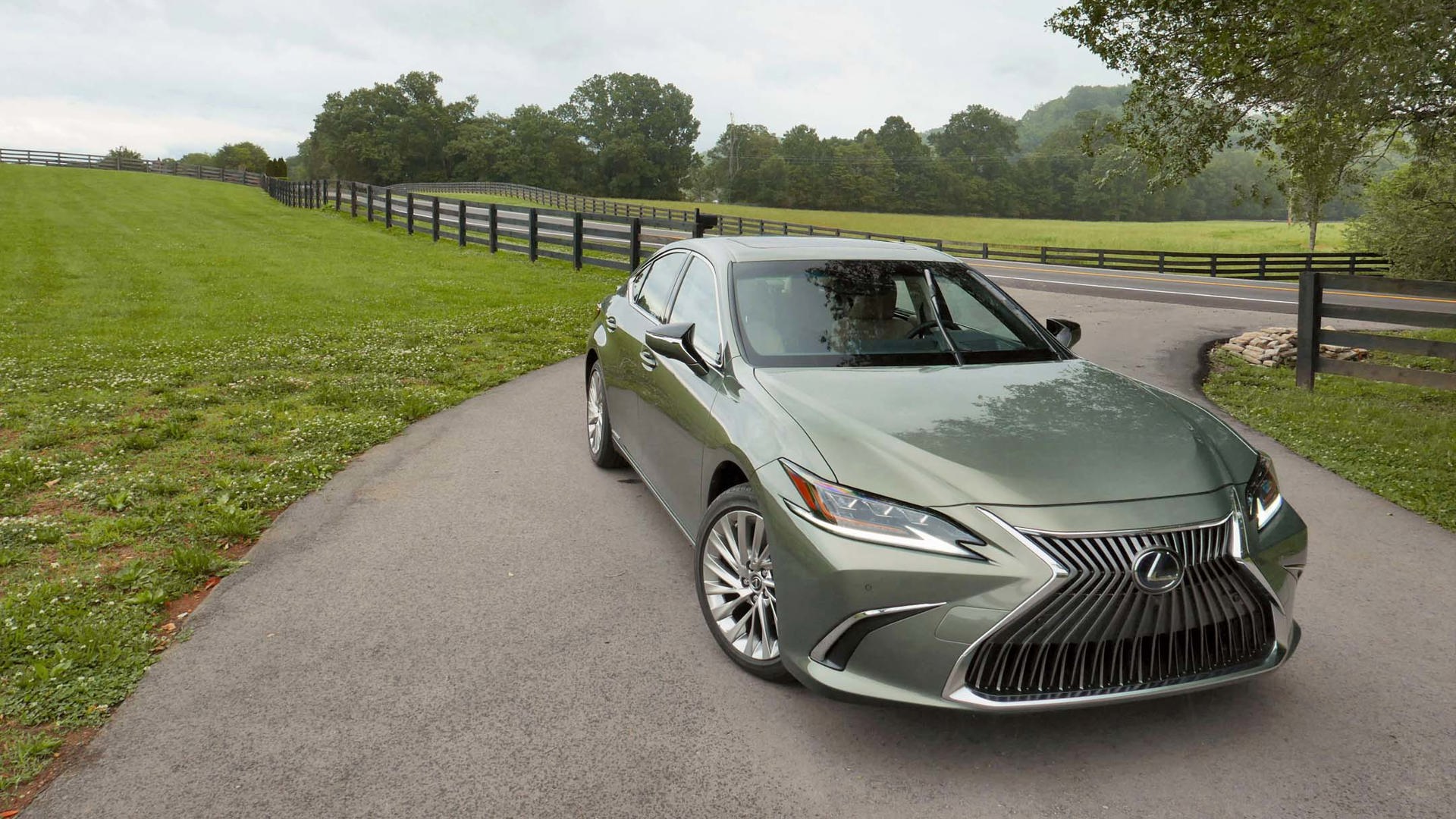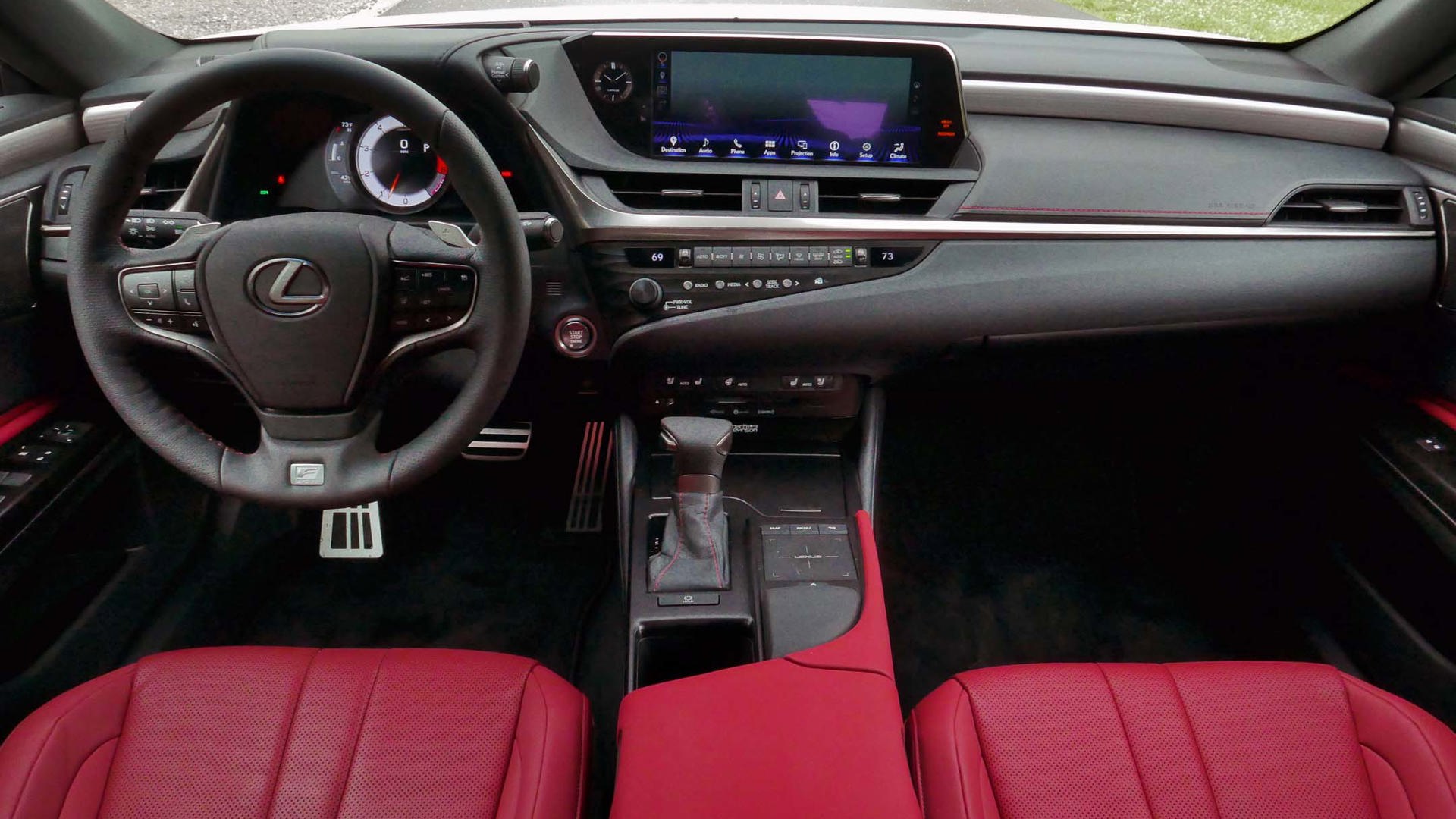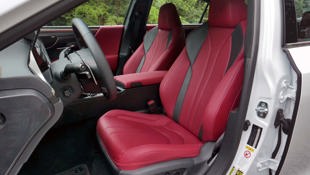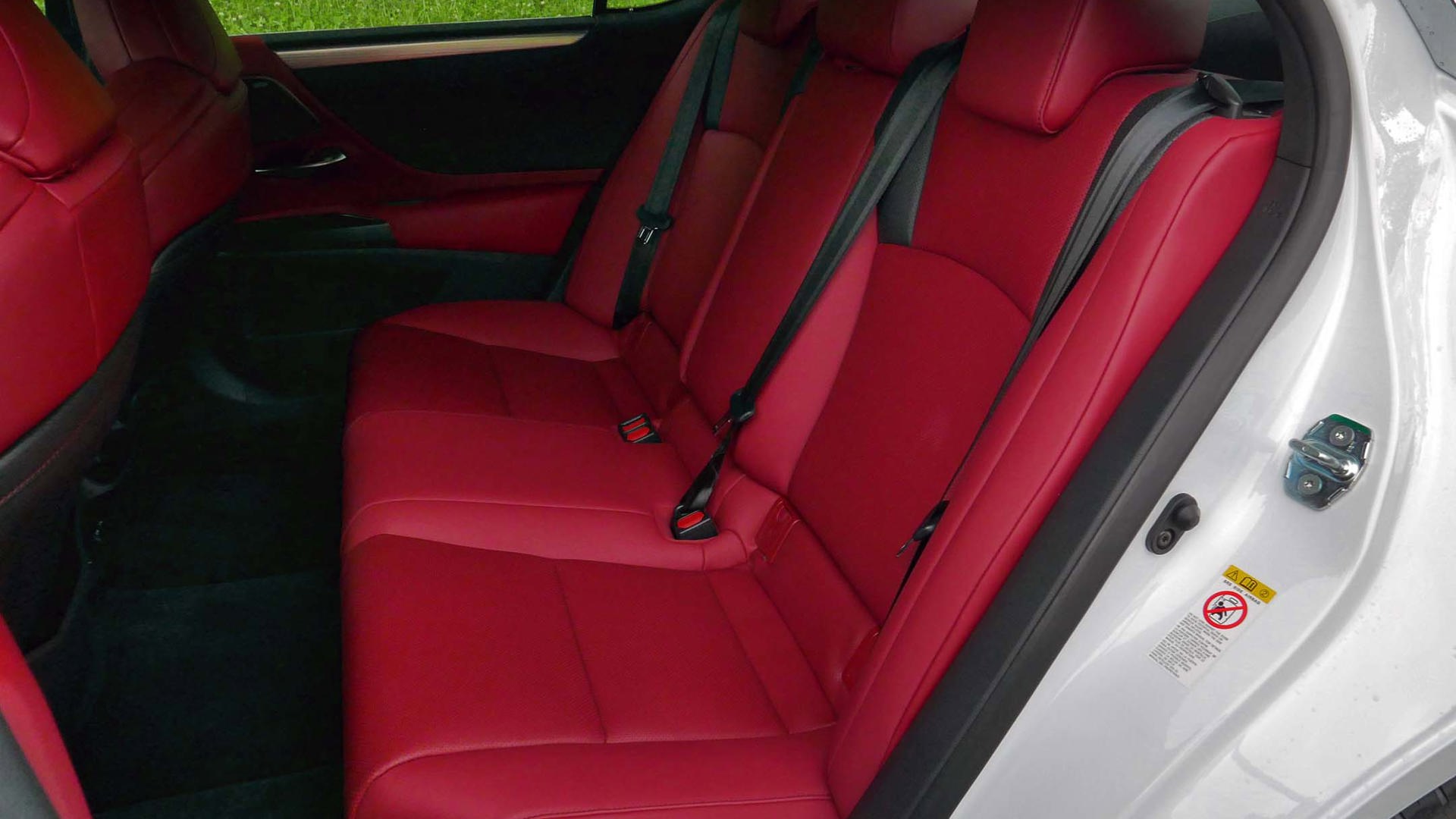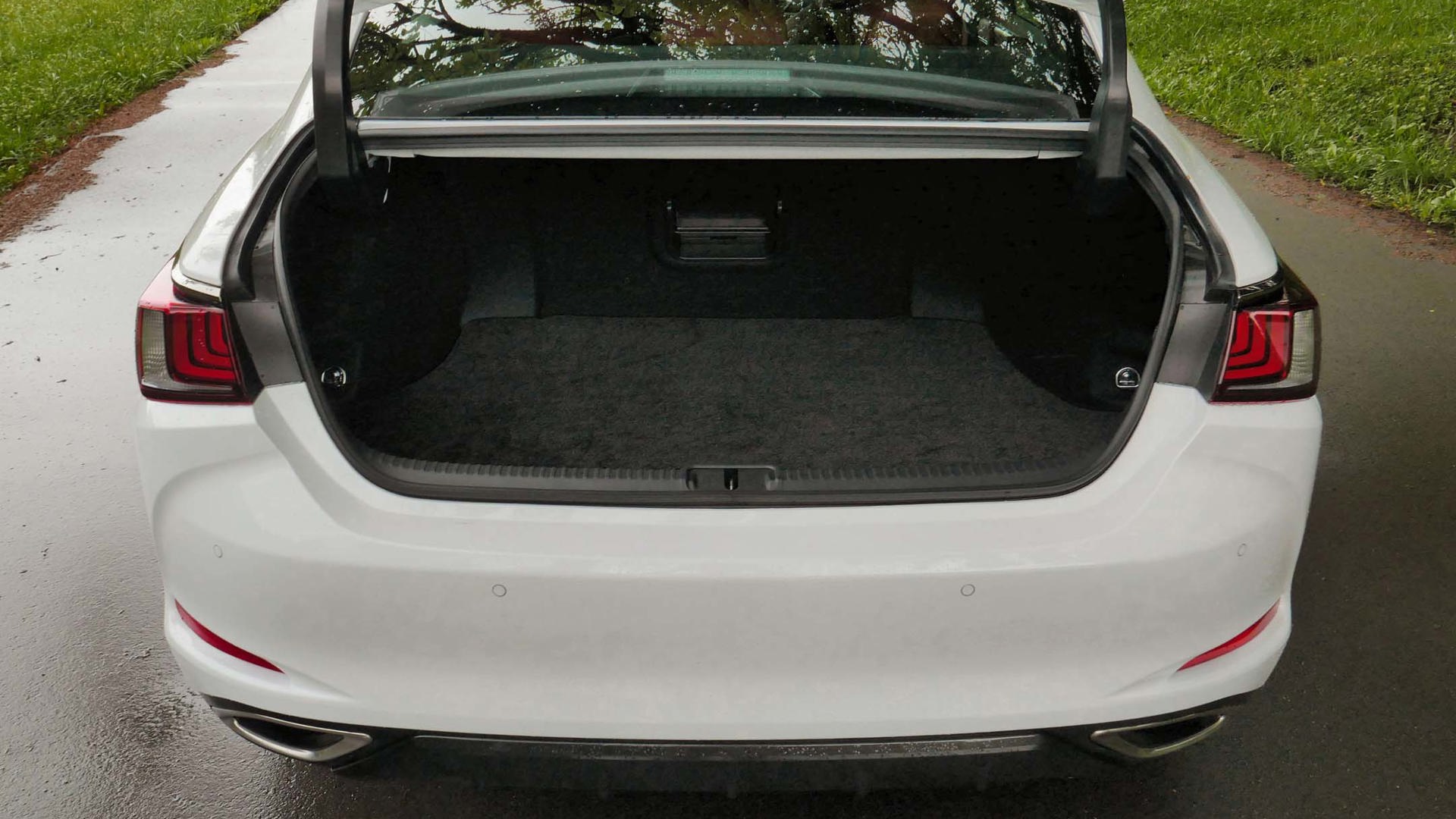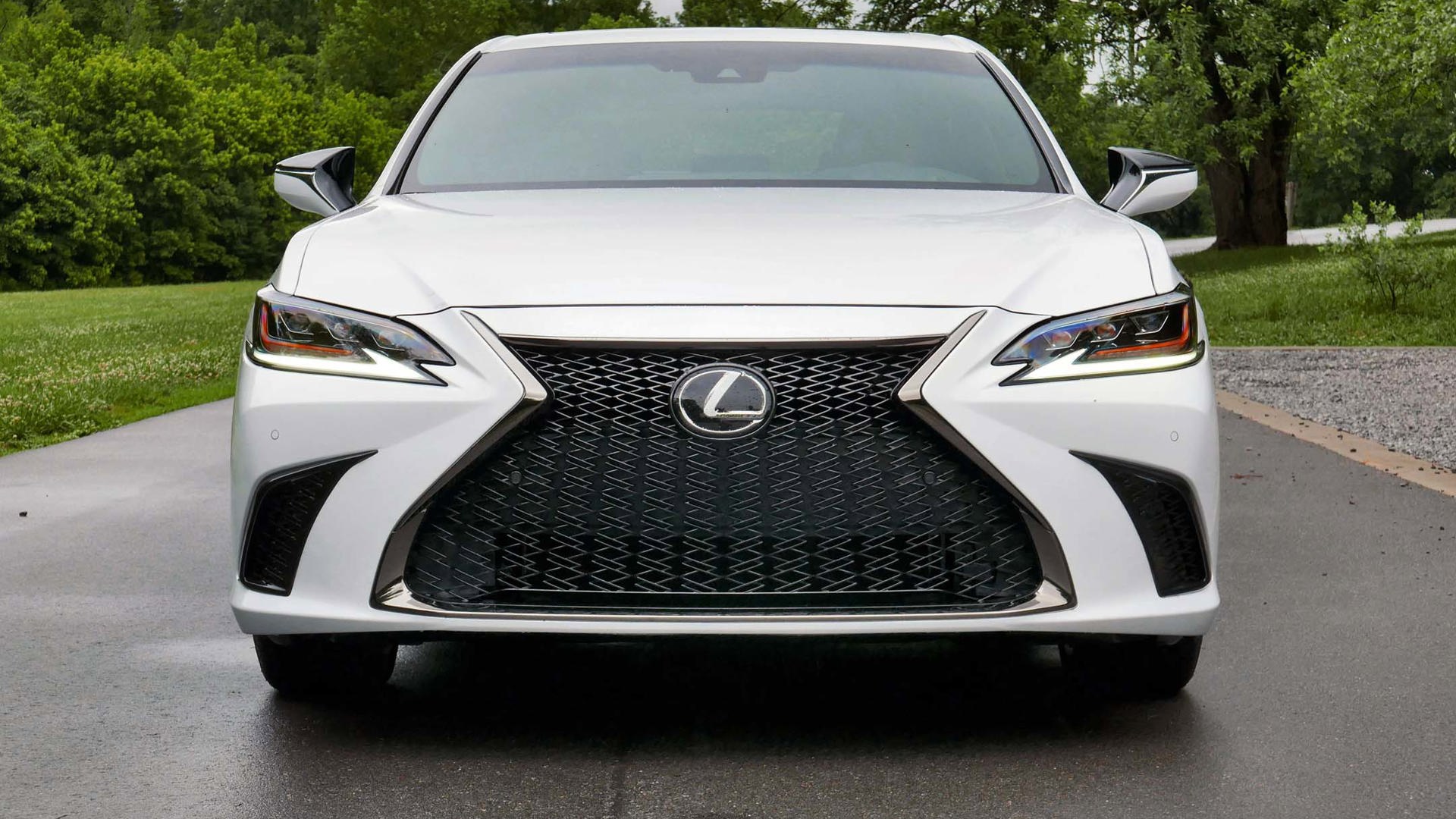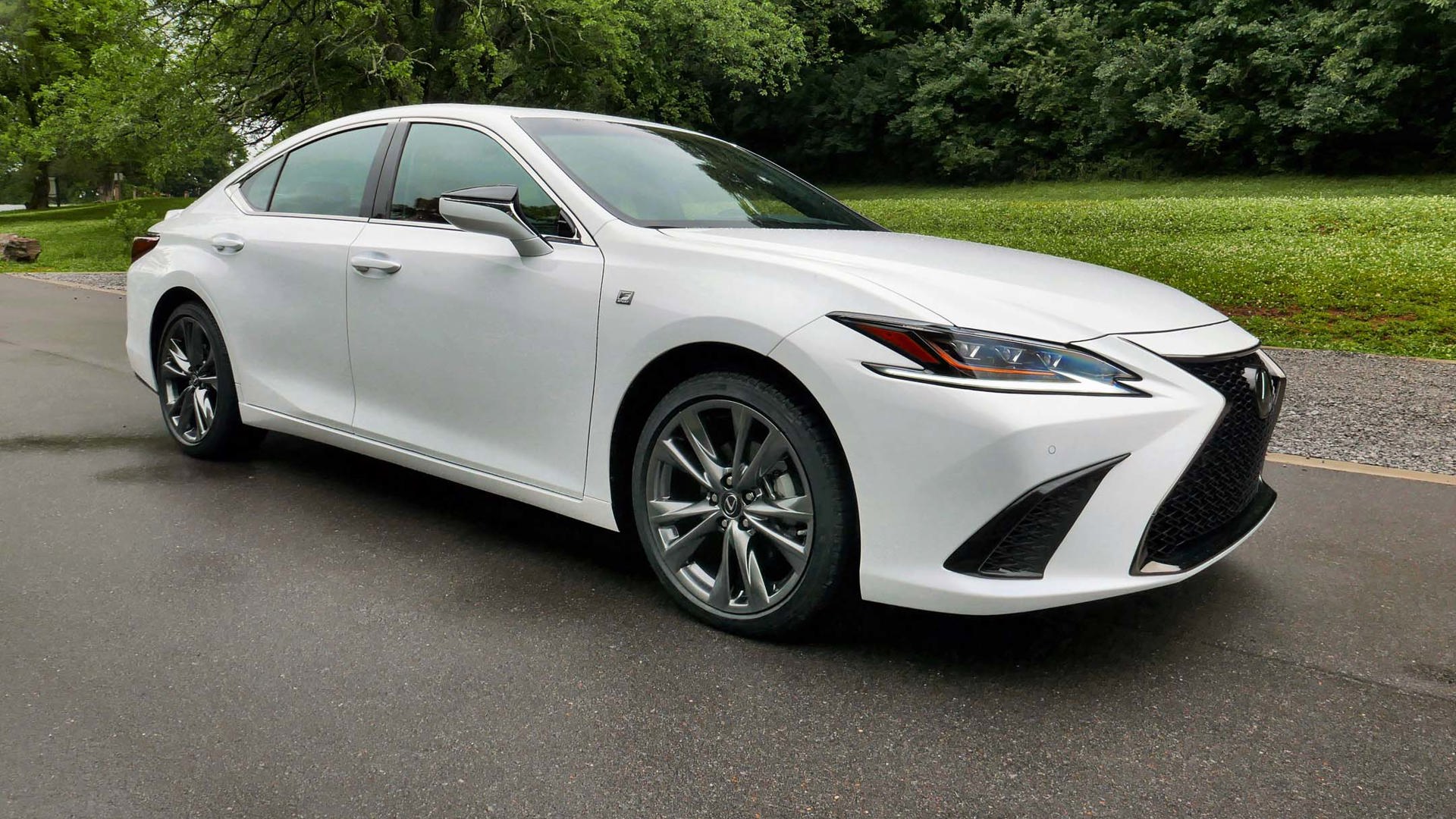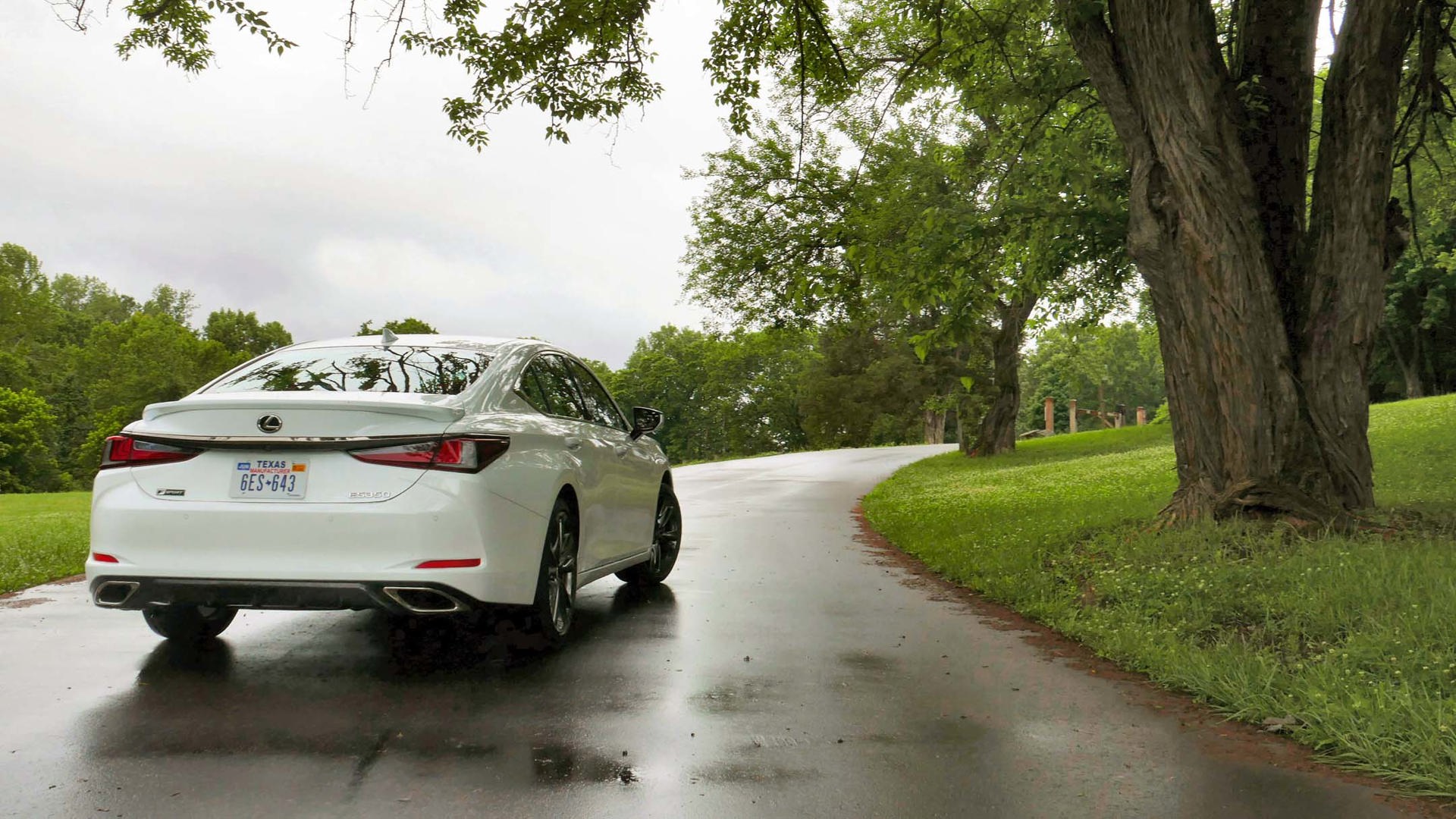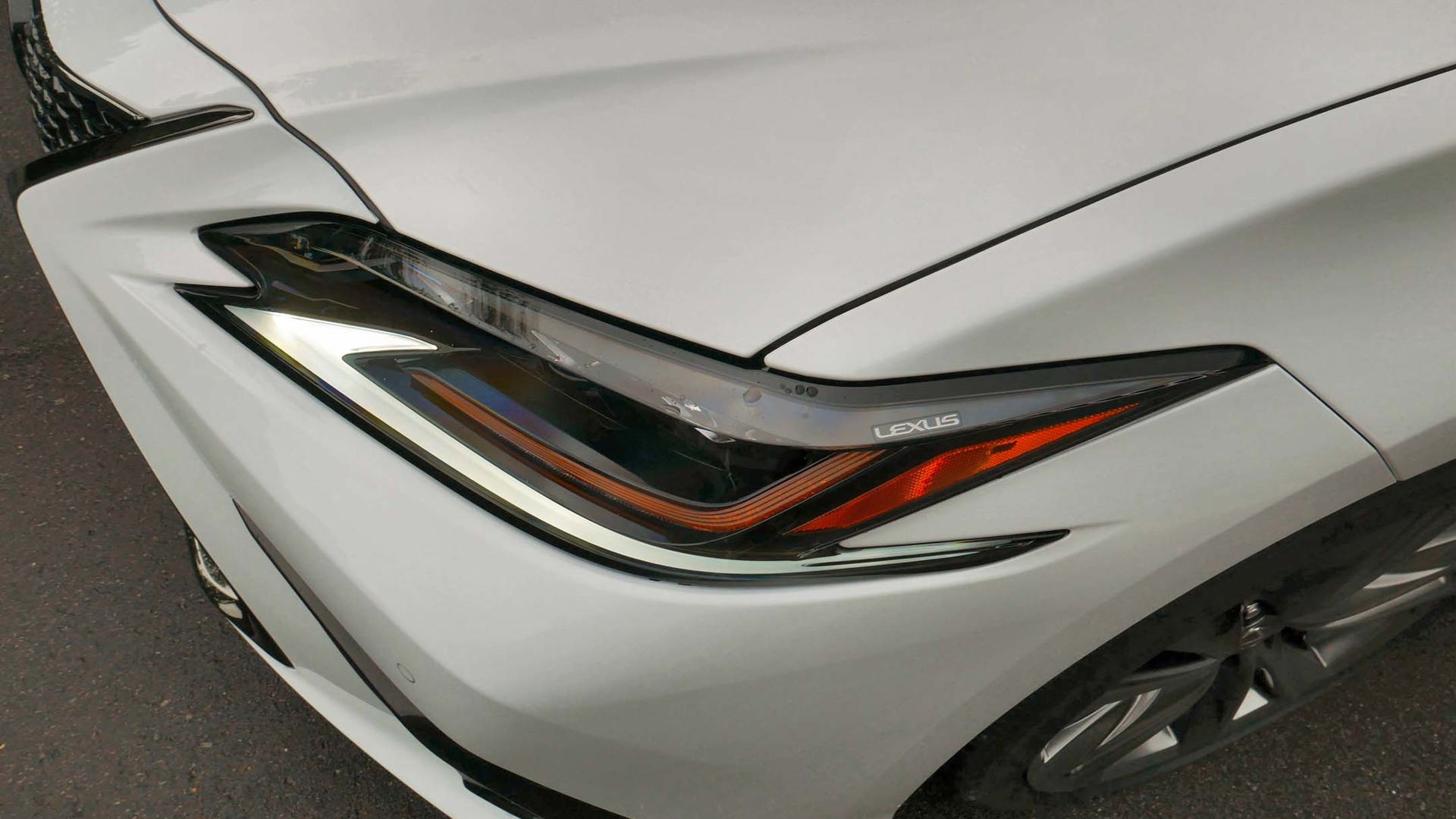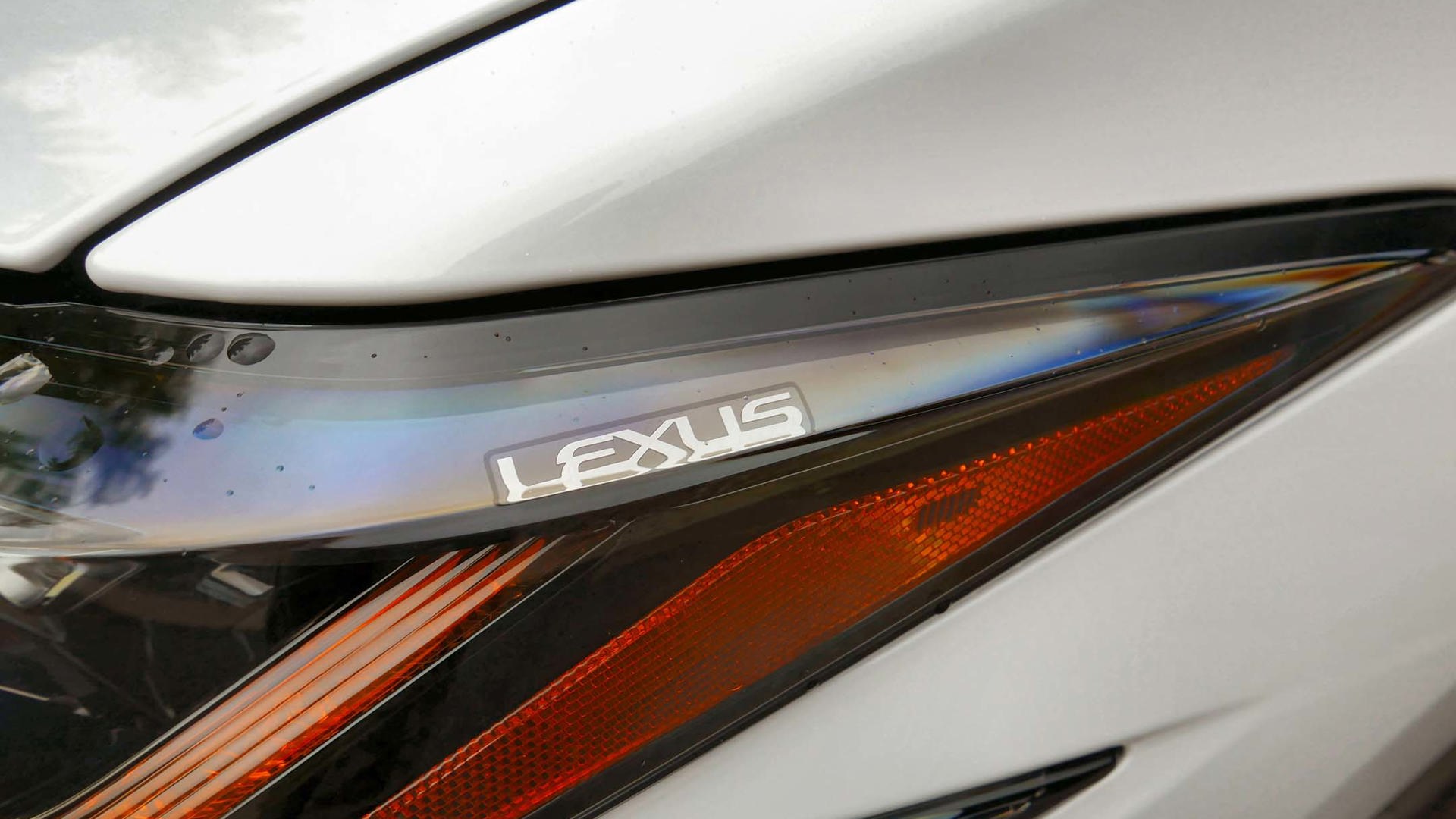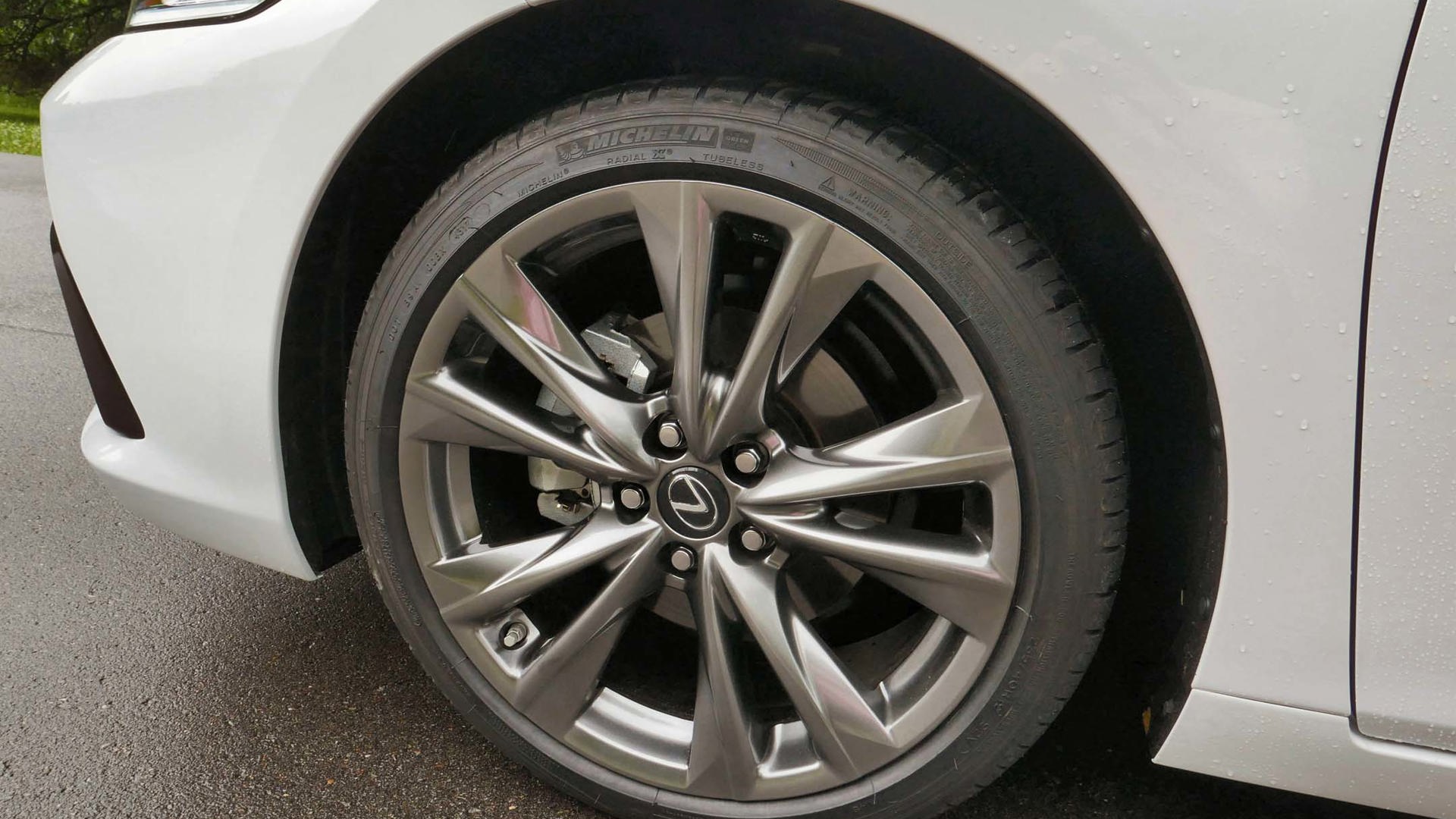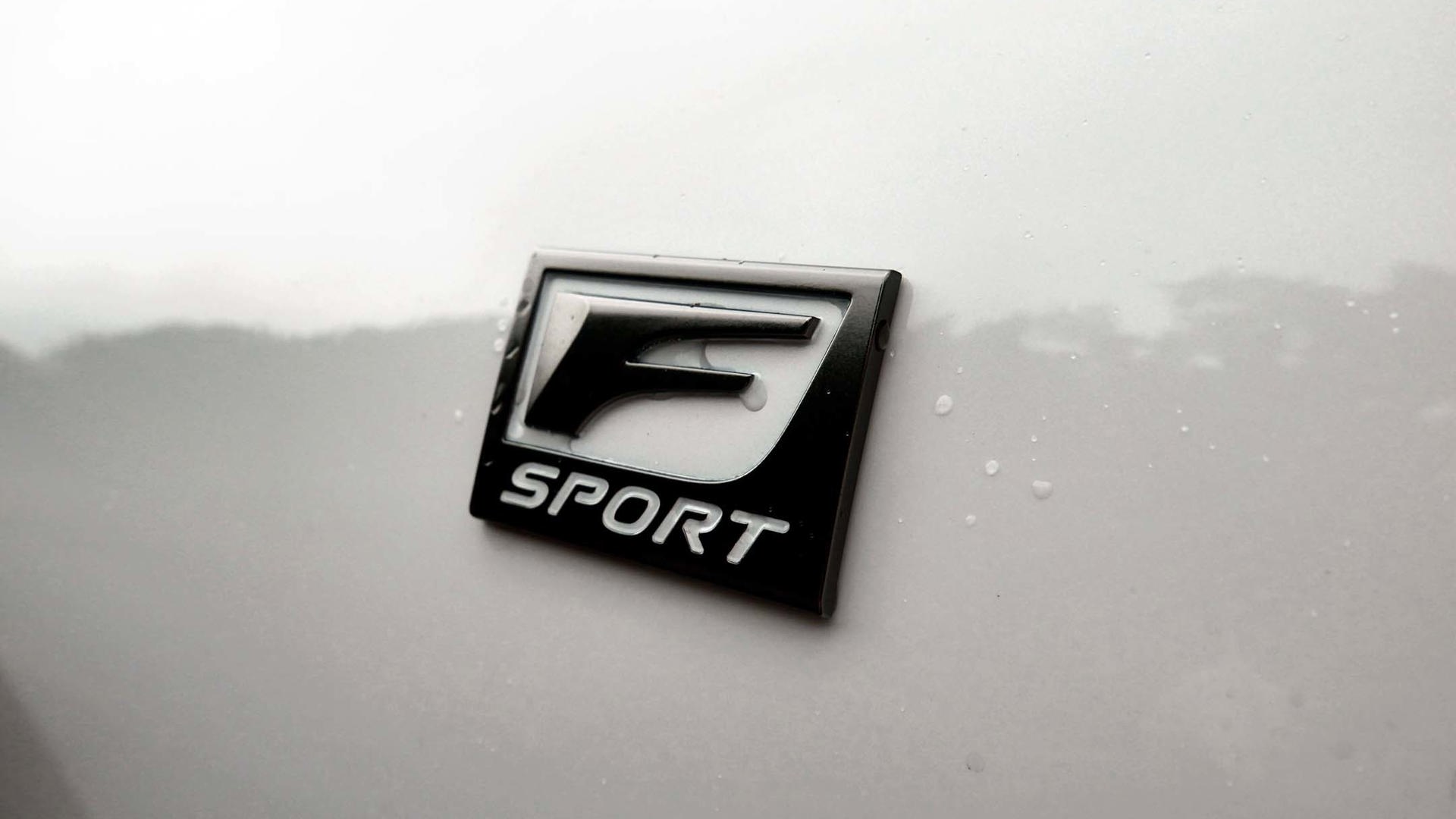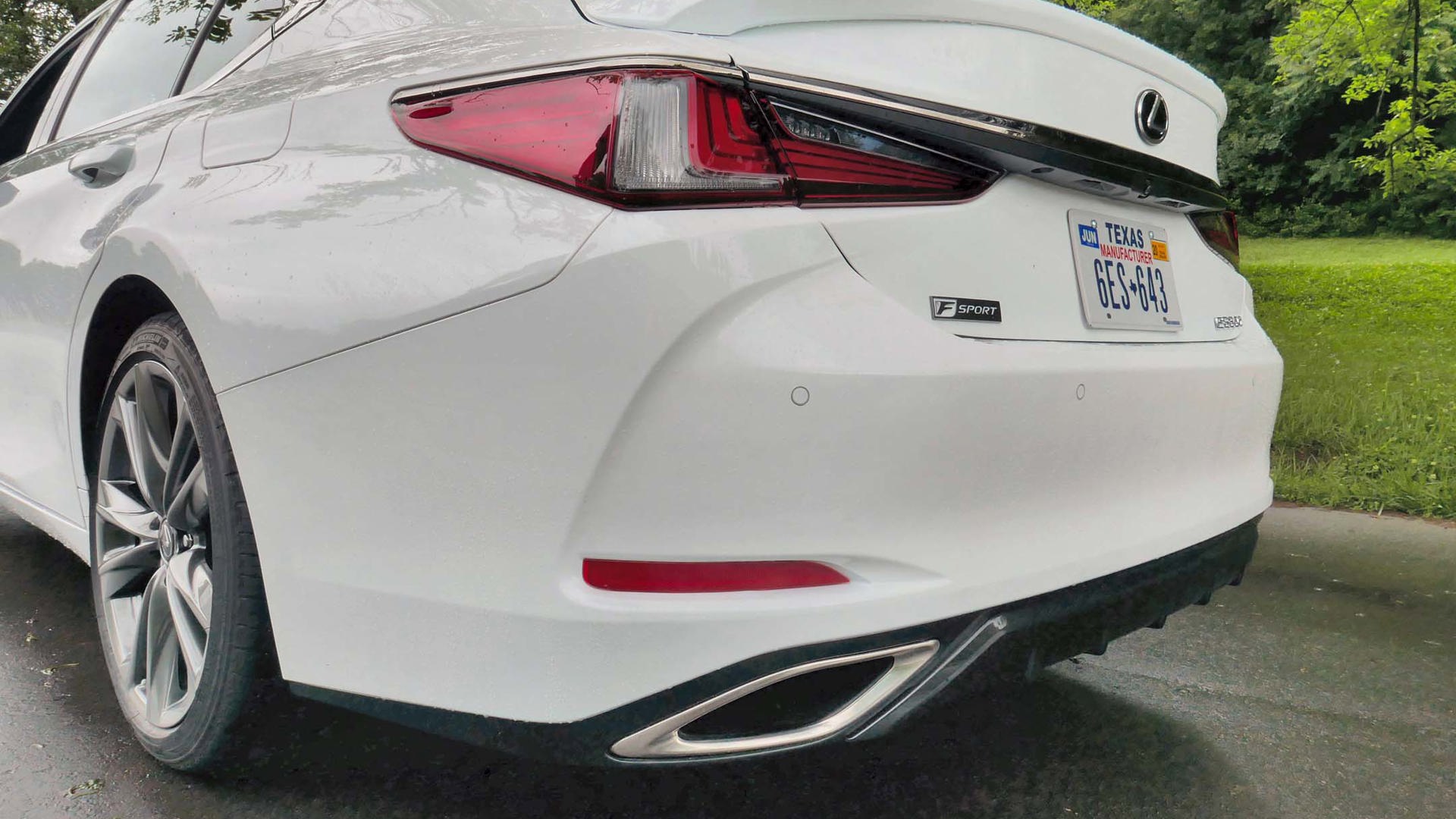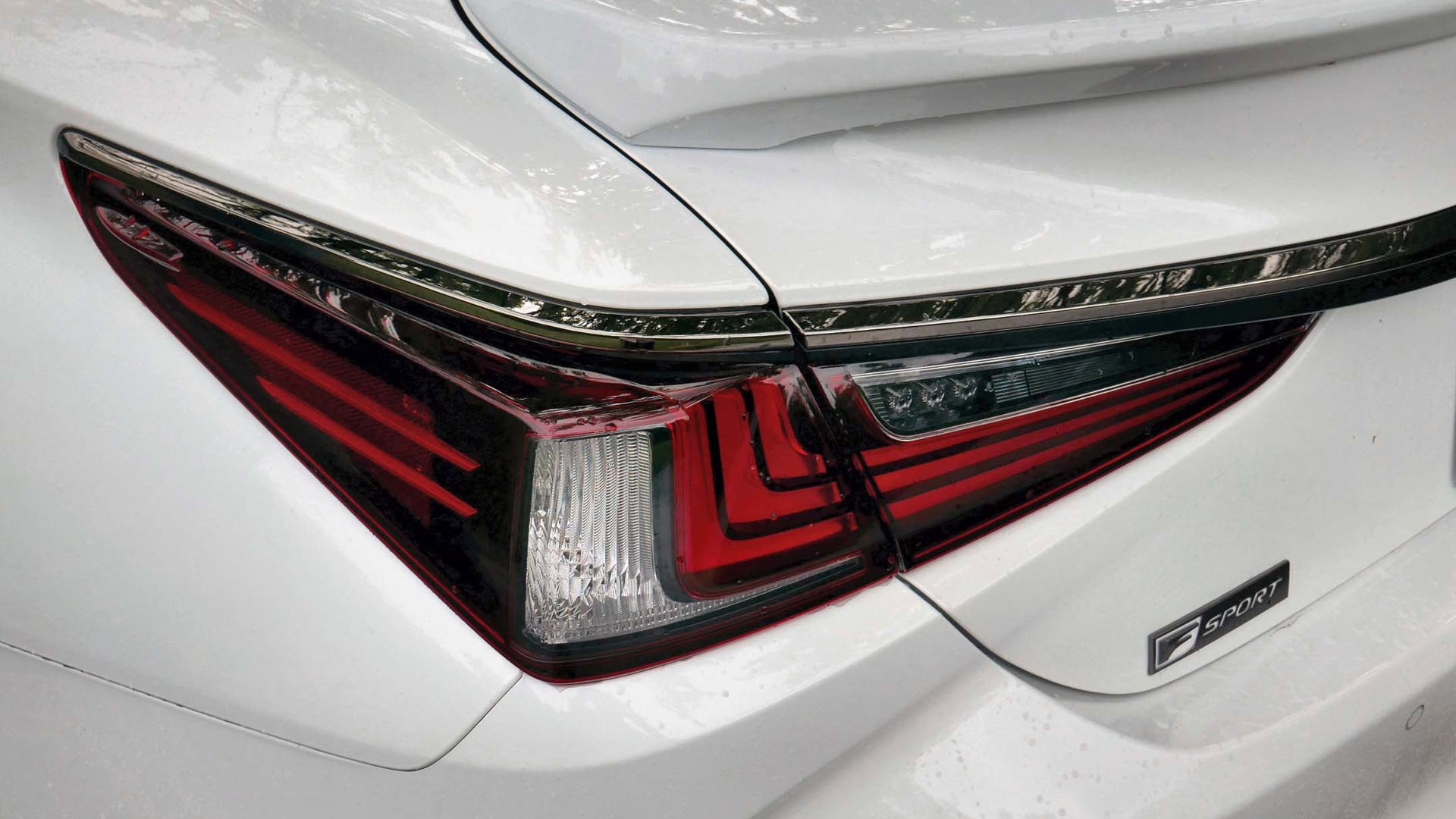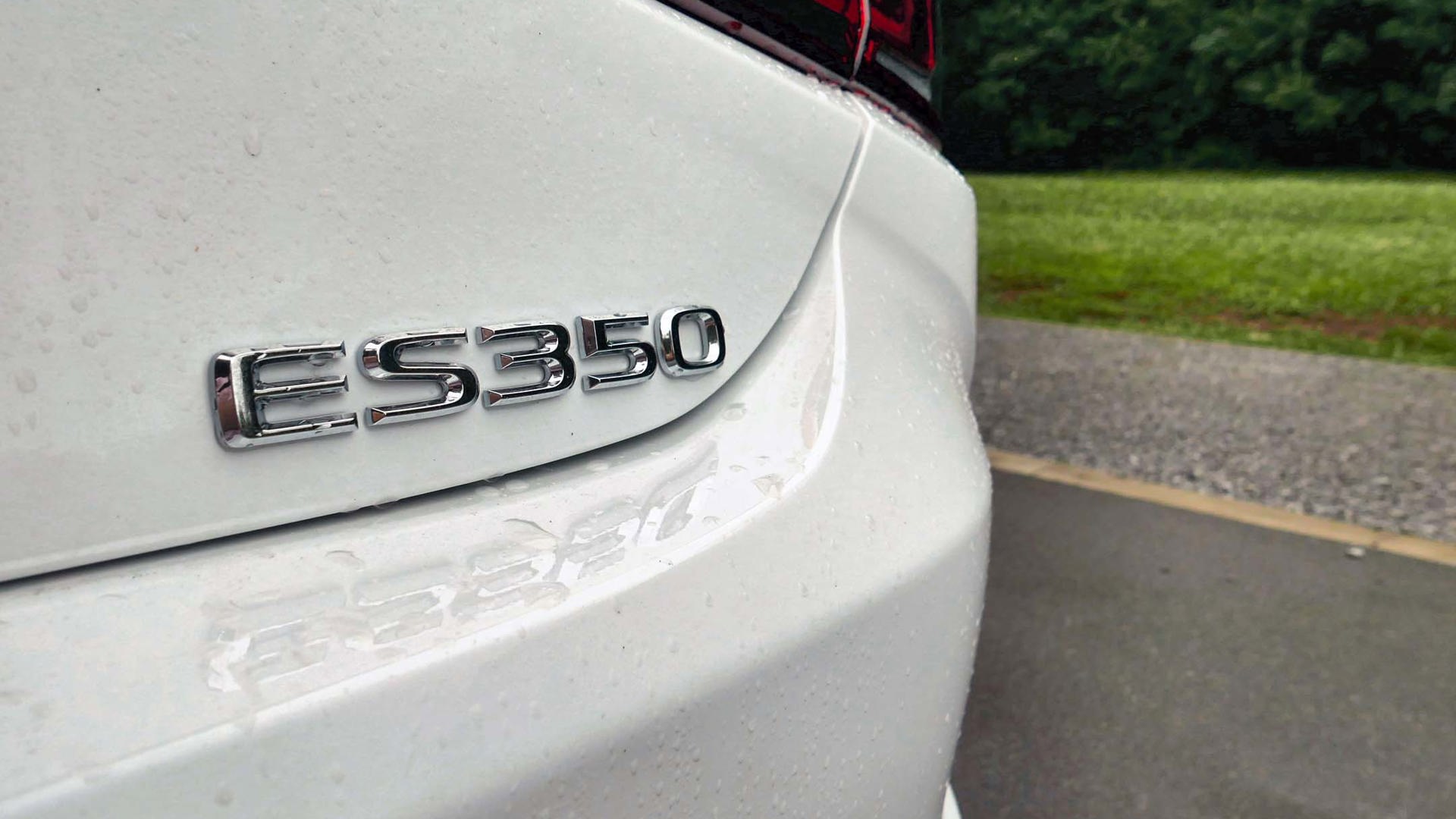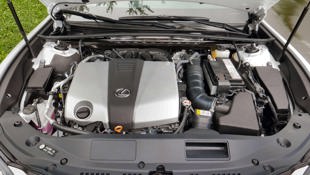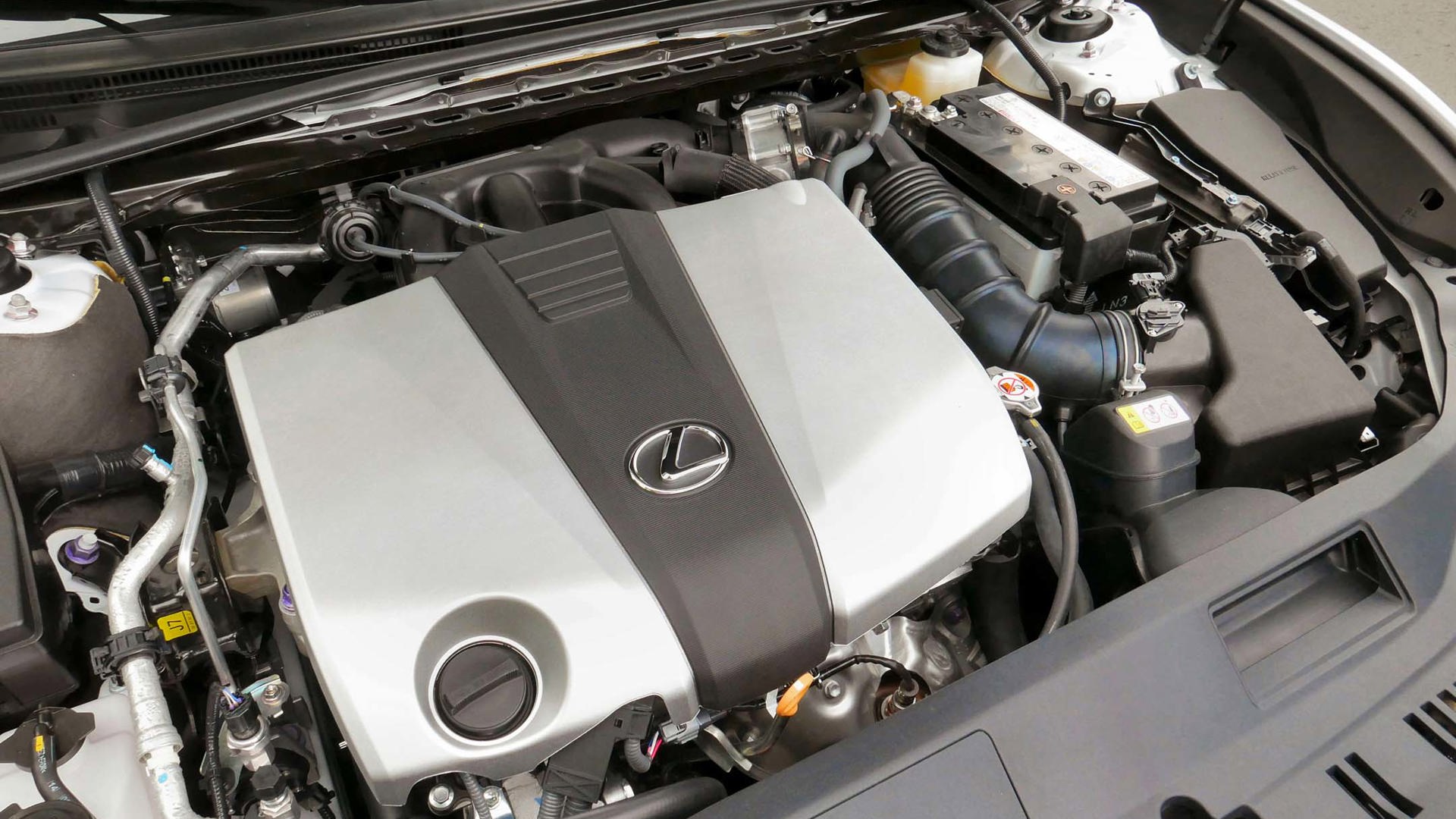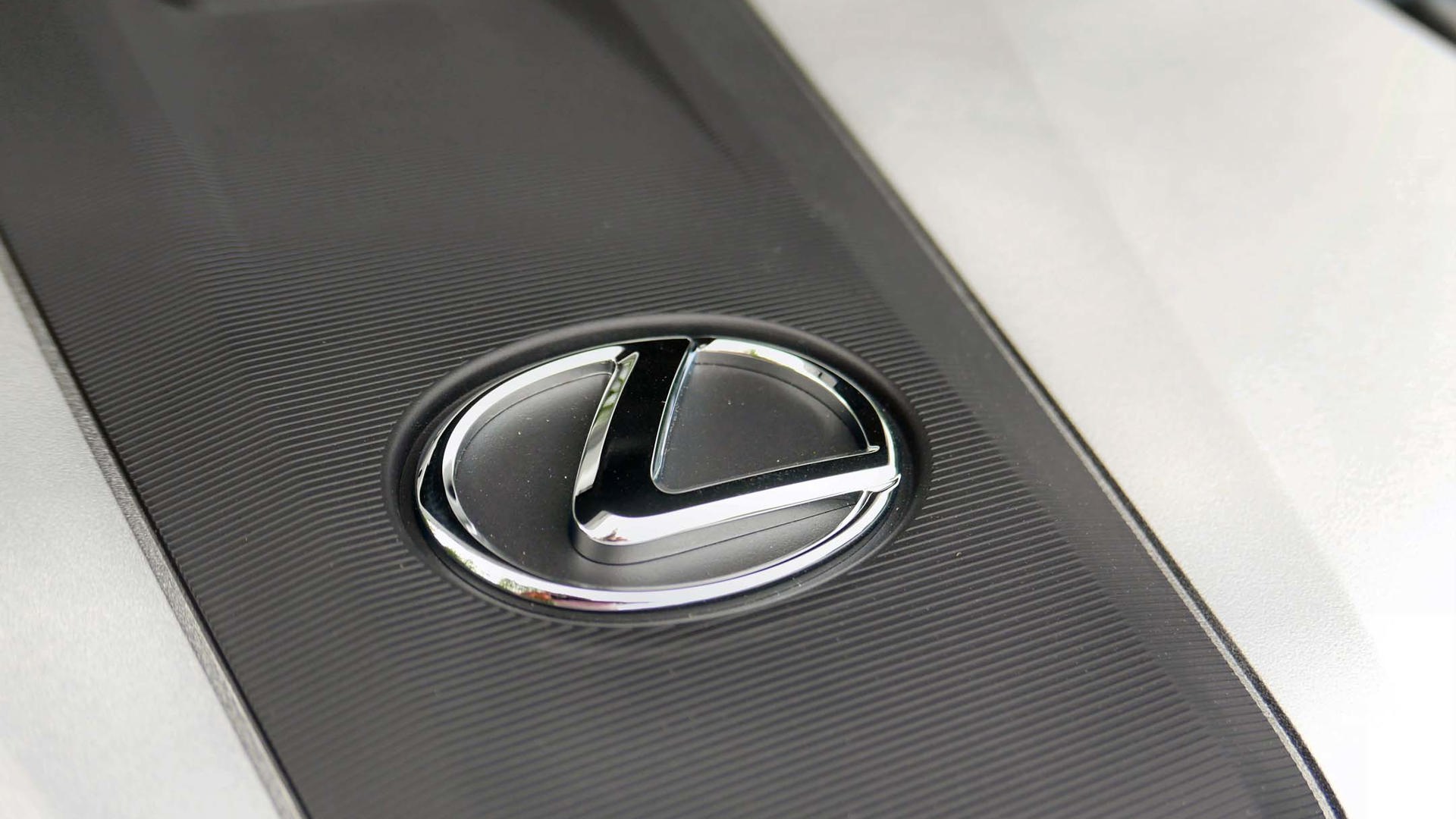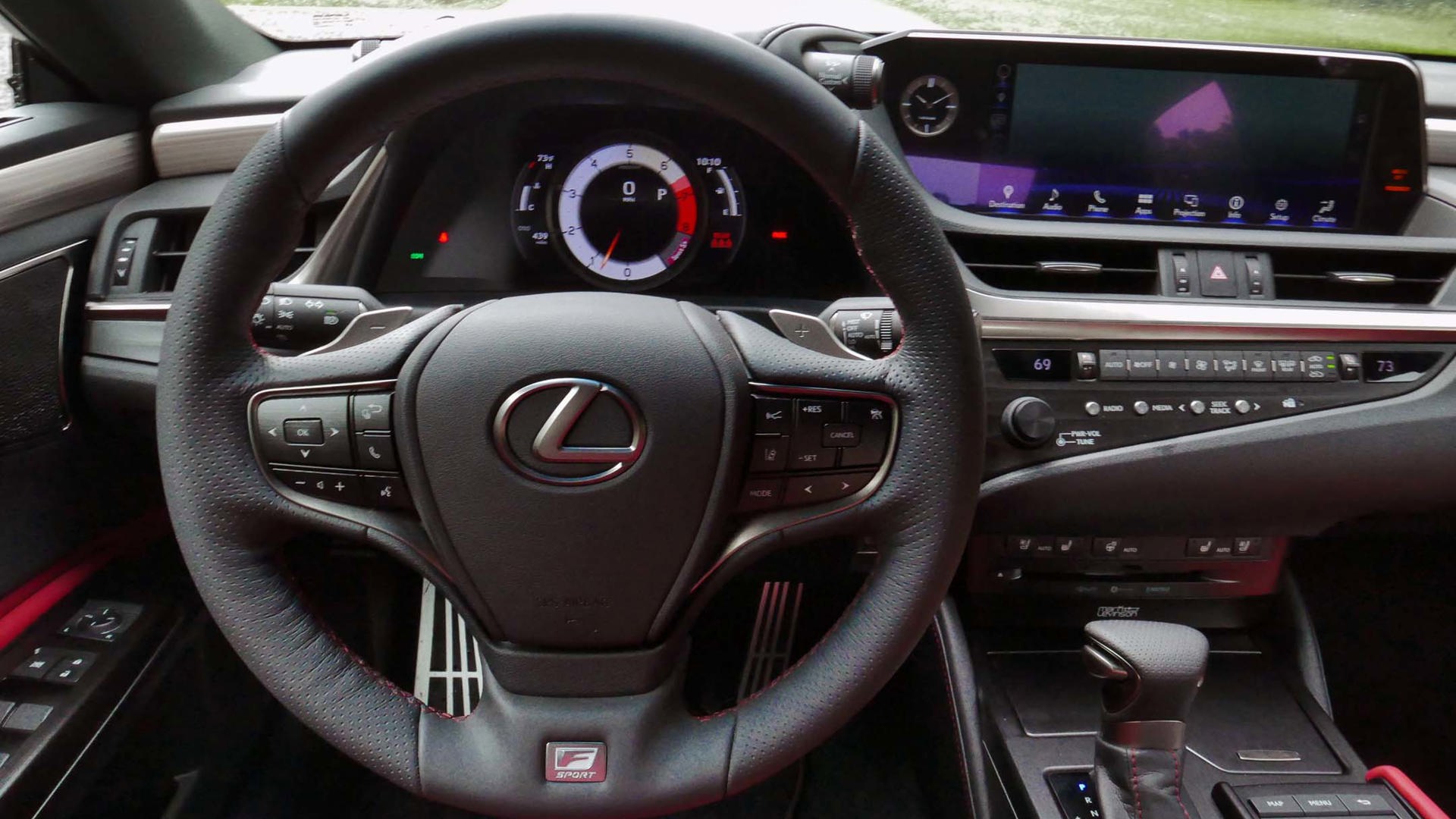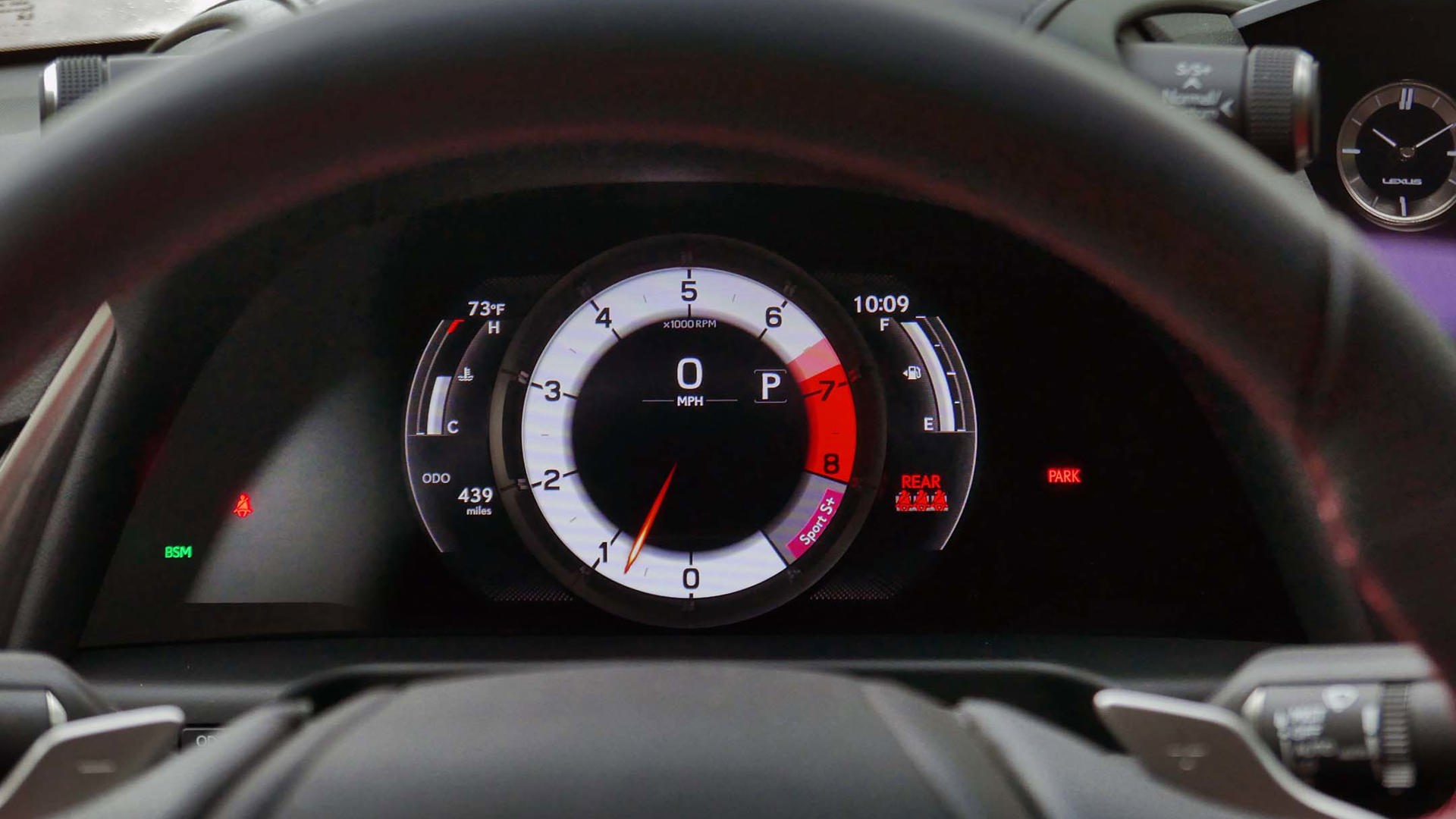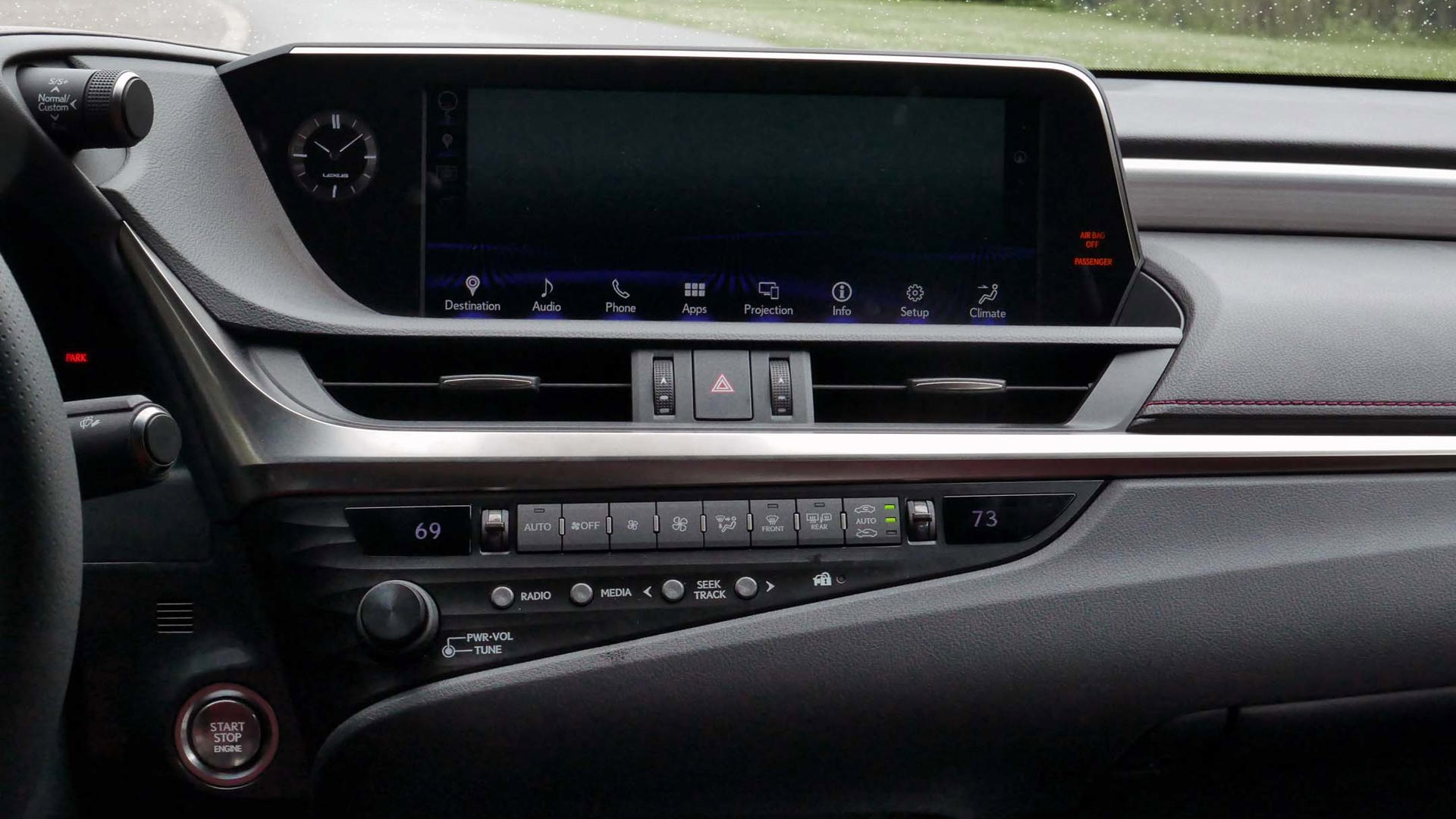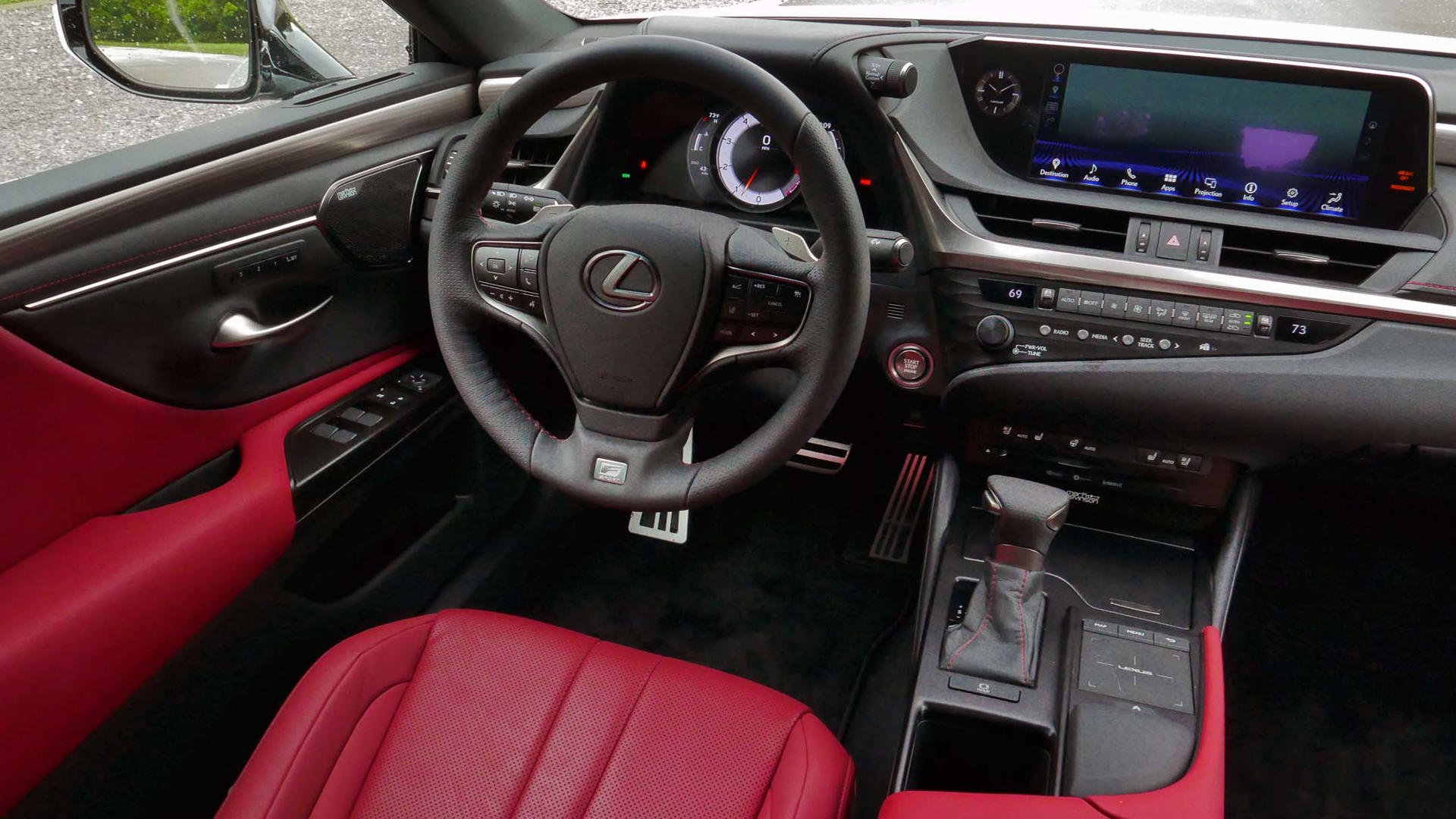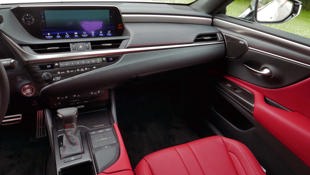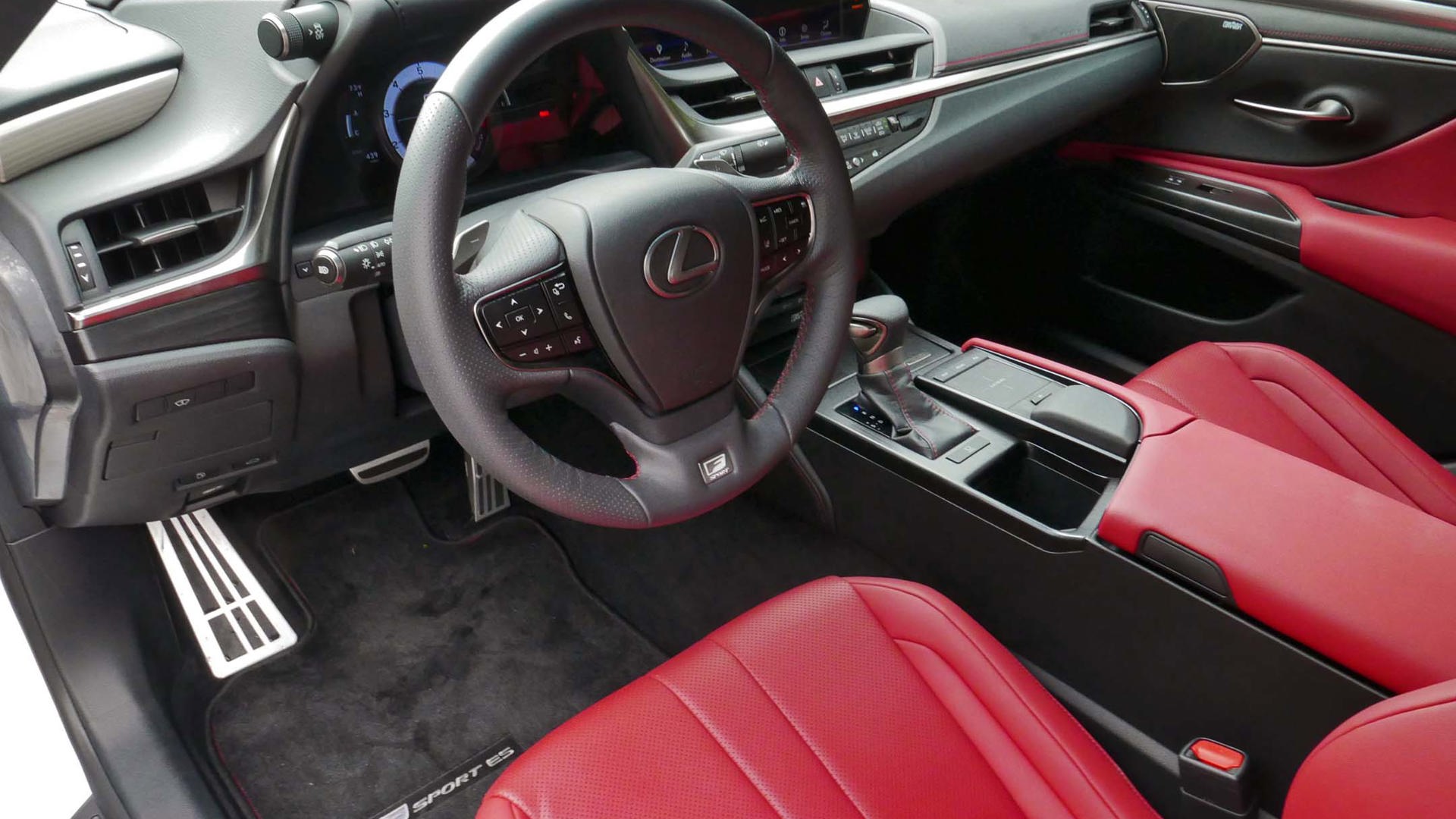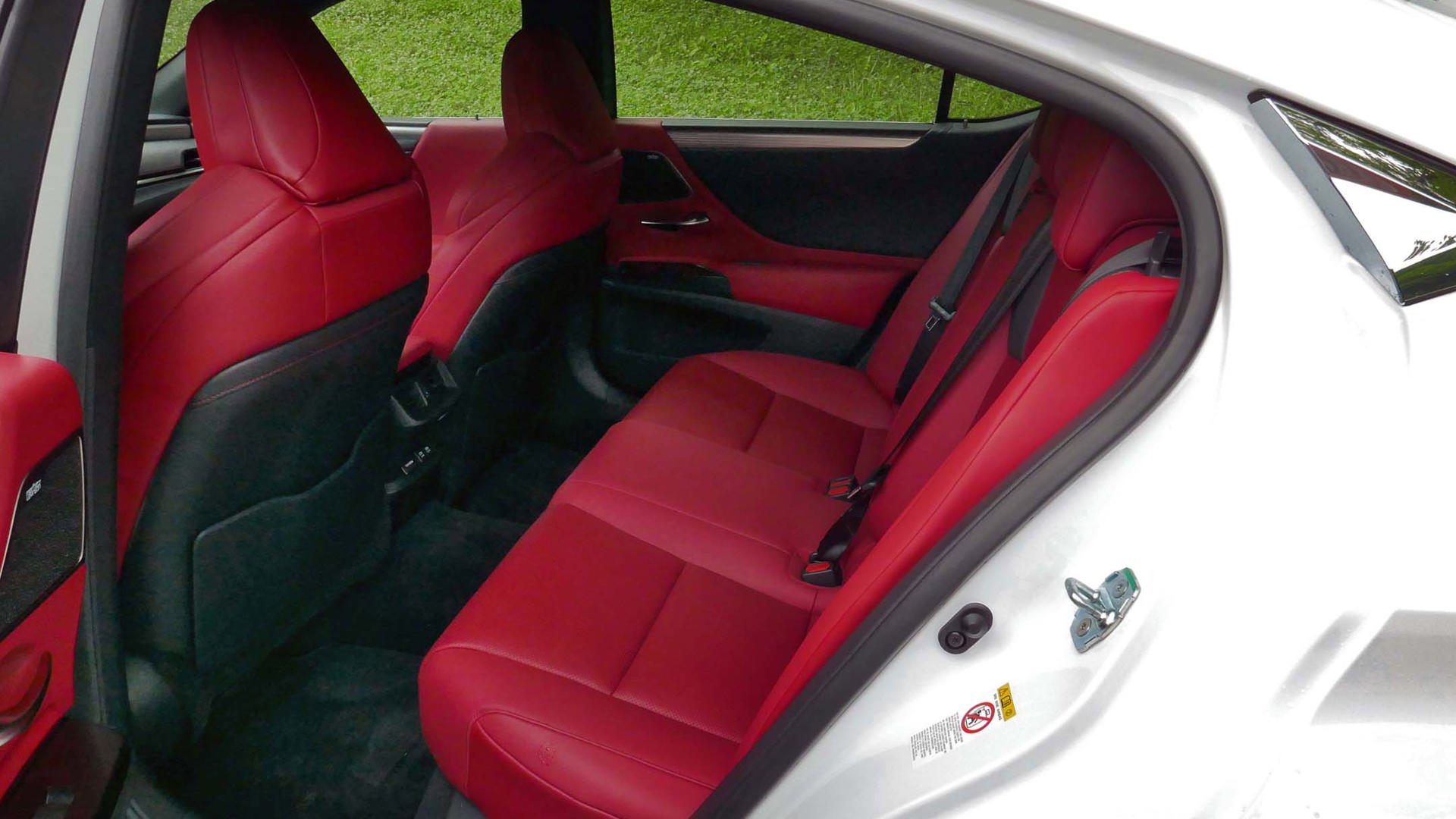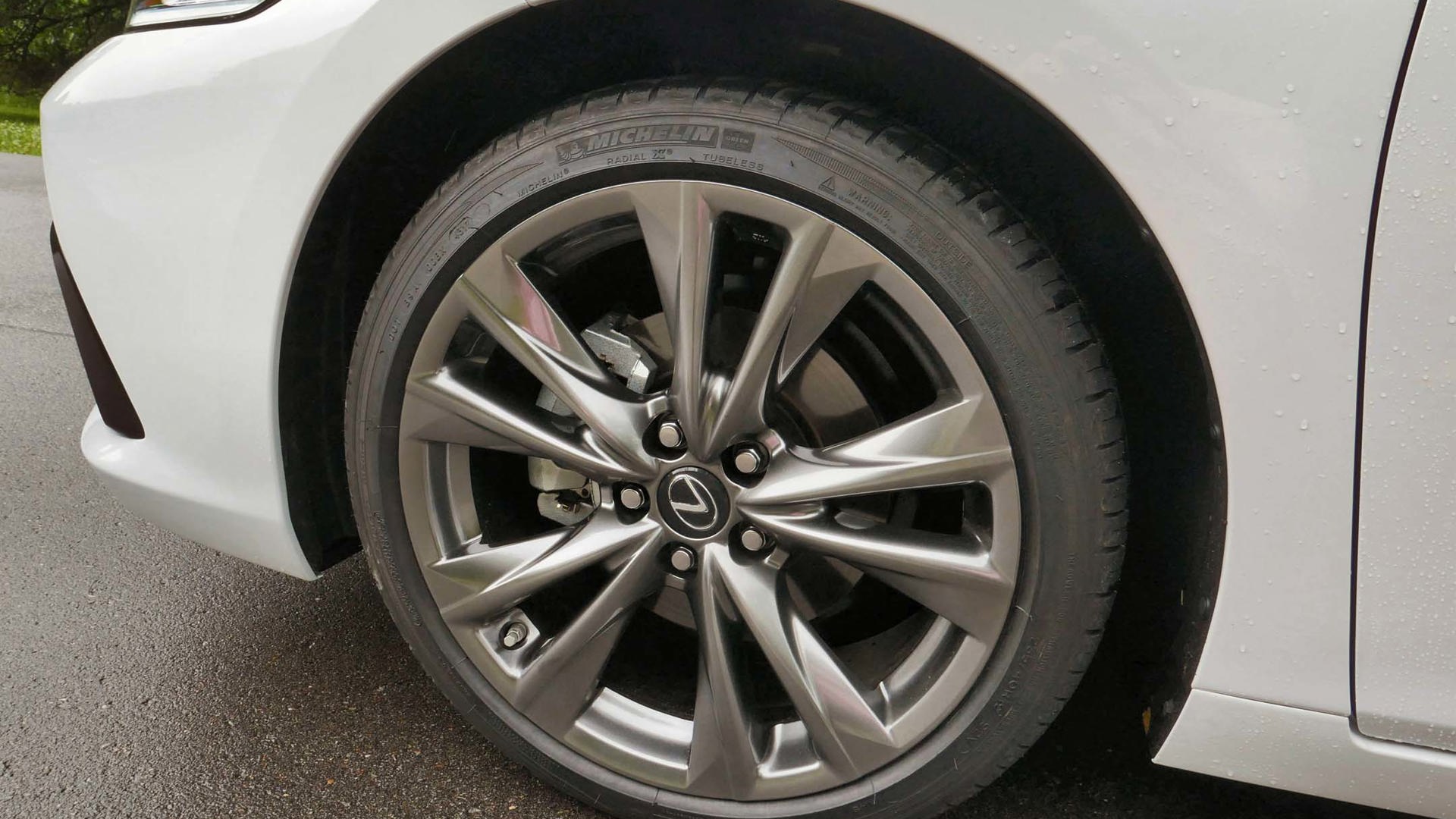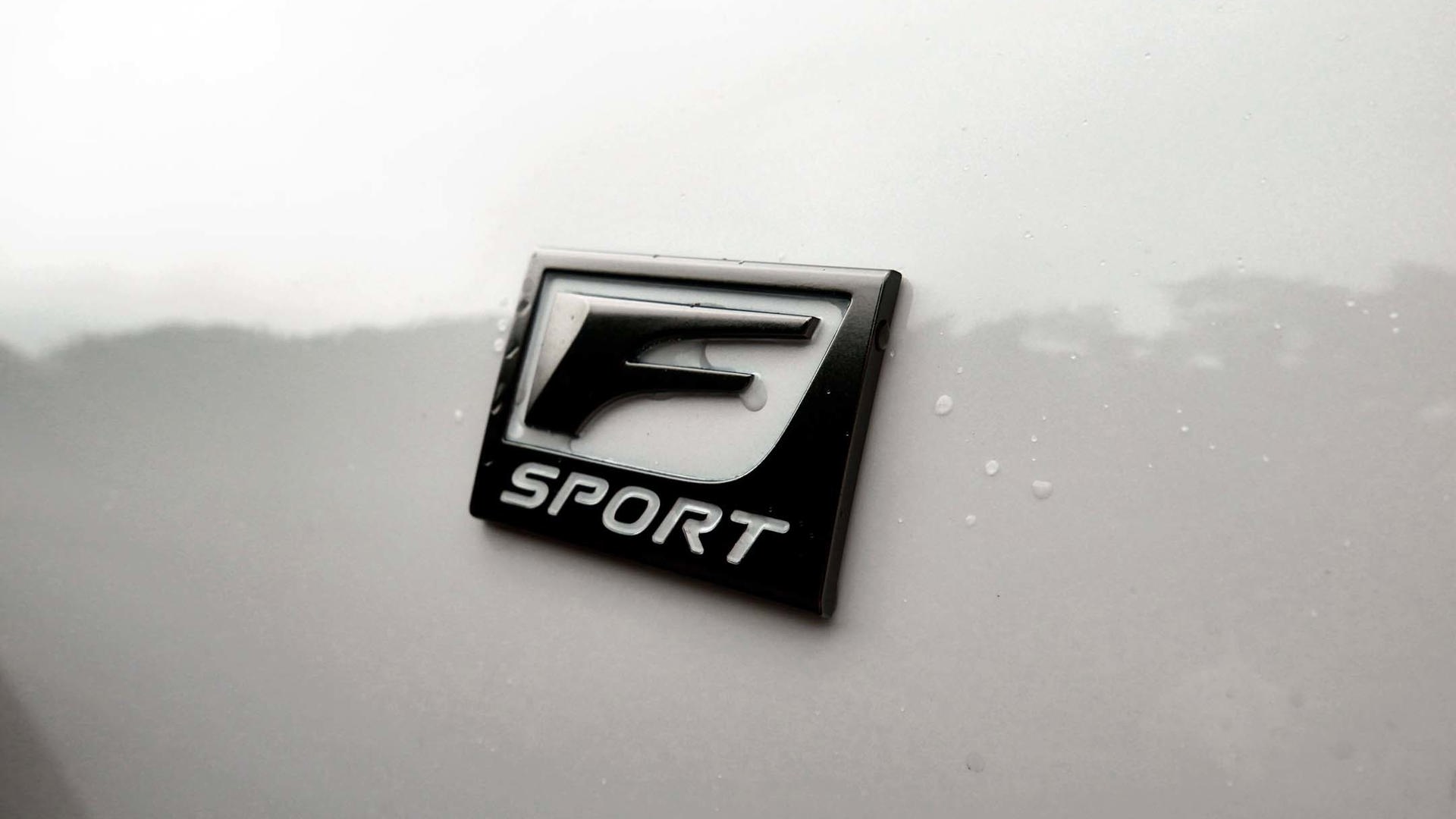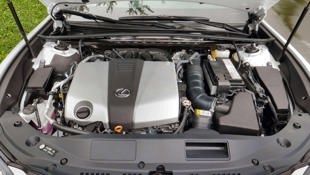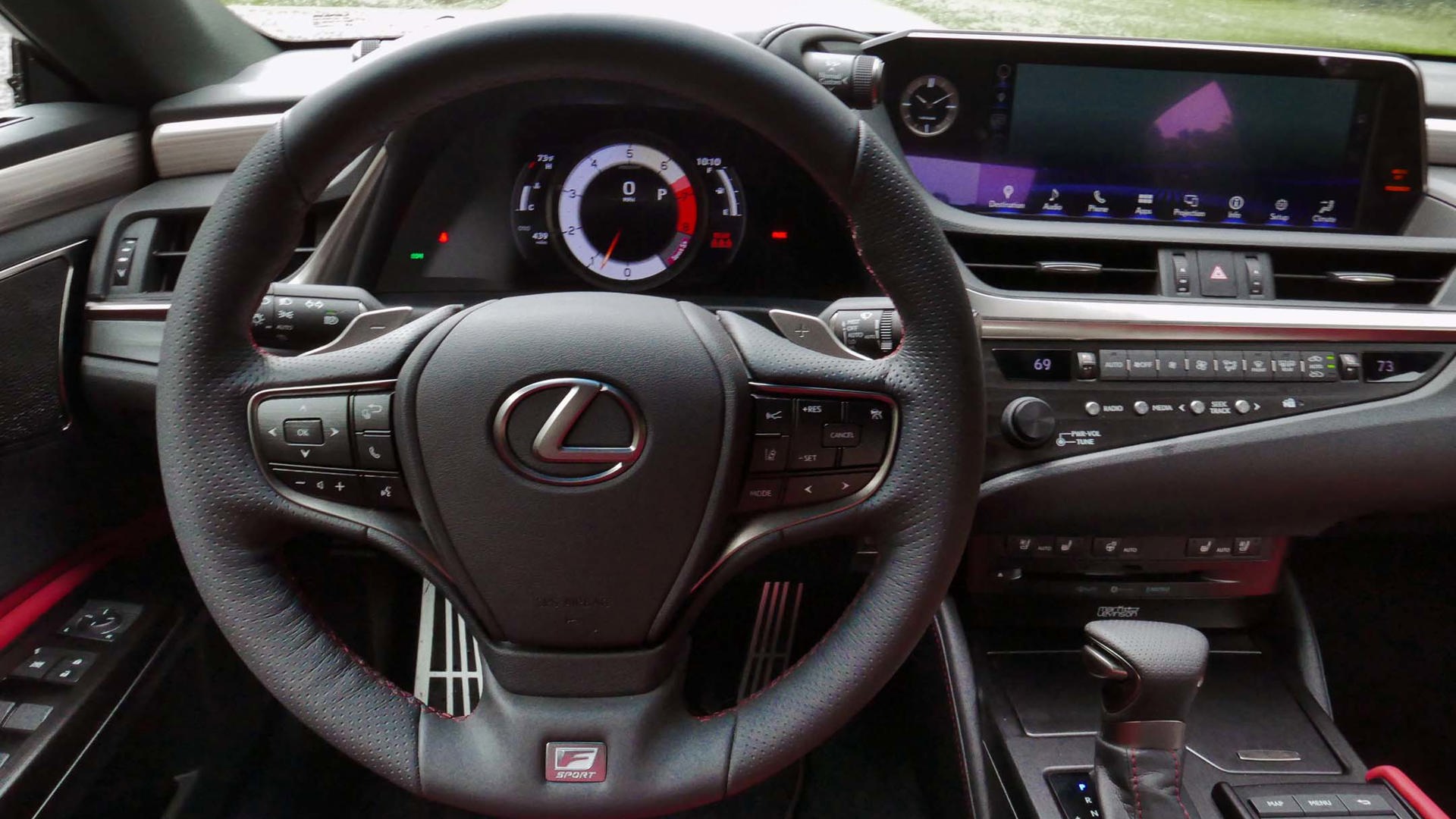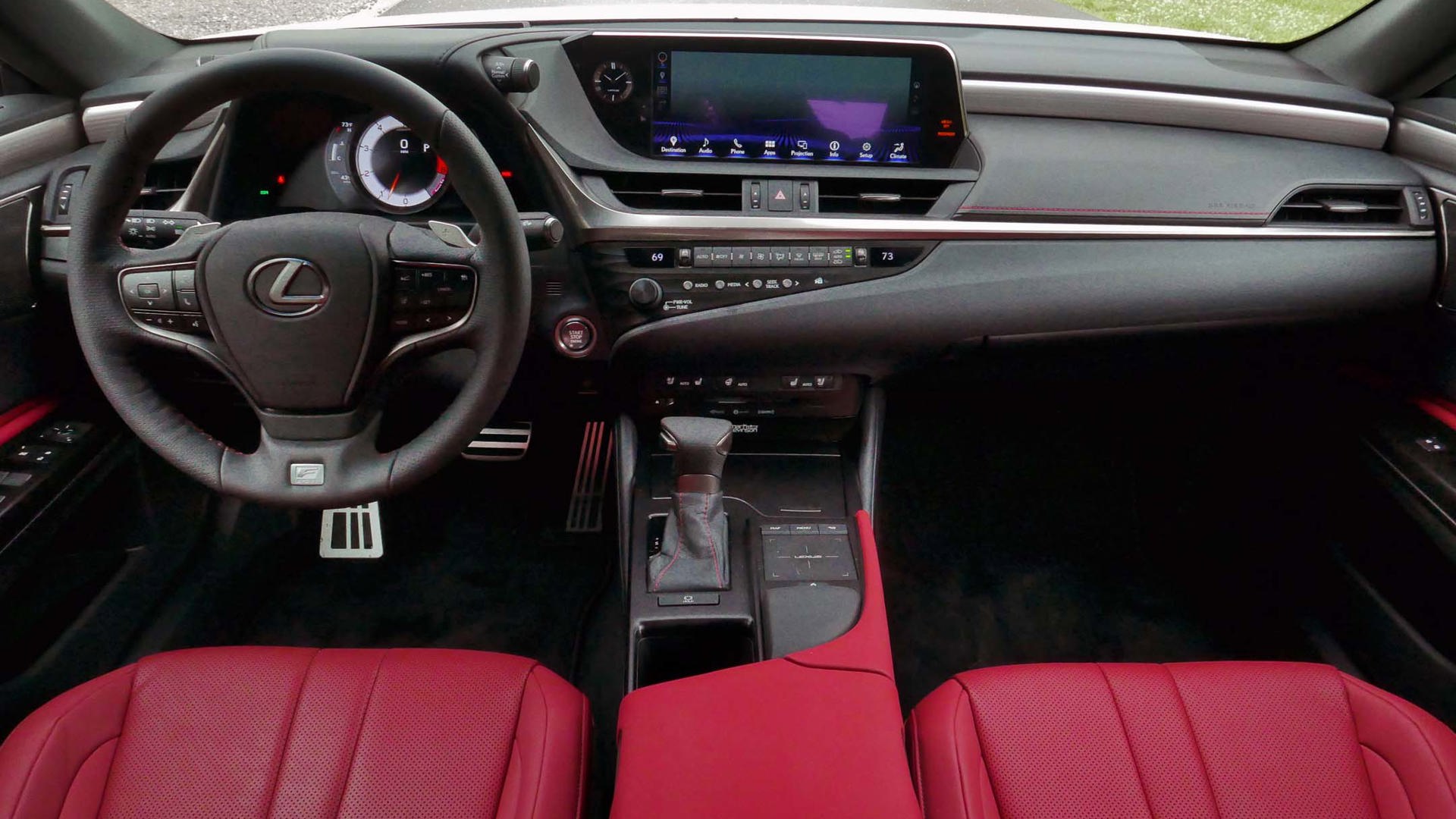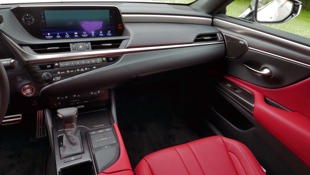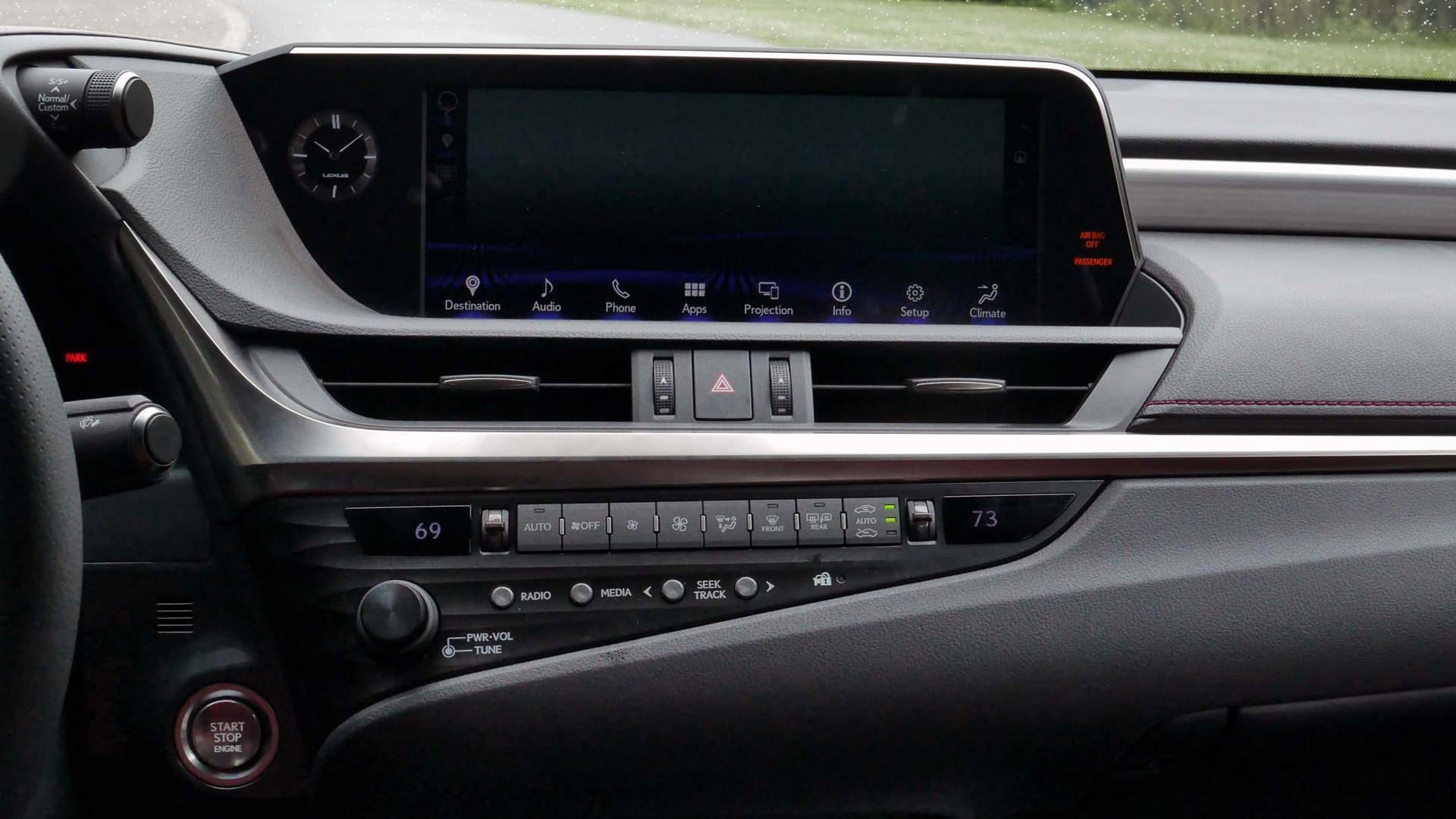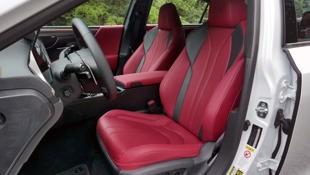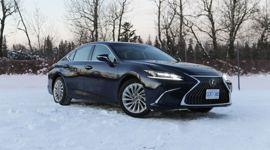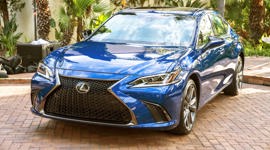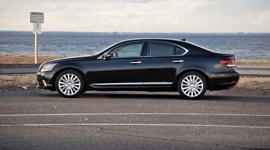The 2019 Lexus ES is an unusual car for the Canadian beachhead of the Japanese luxury automaker. While the ES has traditionally done big business in the United States, to the north it’s enjoyed a more modest reception, trailing segment leaders in the premium segment. Still important to Lexus – and still seen as the four-door entry point to the brand for many first-time buyers – the ES has been redesigned for the upcoming model year in a bid to resonate more deeply with shoppers seeking a little extra on top of its traditional combination of reliability, comfort, and upscale features.
A bold statement, given the ES’ past reputation as a cruiser par excellence that prioritized occupant insulation from the outside world over driver engagement.
F Sport, What?
I made my way down to Nashville, Tennessee, for a chance to drive the new Lexus ES 350 and 300h amidst the lush greenery and softly sculpted hills that surround the music capital of the south. My first encounter with the mid-sizer was indicative of the new philosophy guiding a significant part of the car’s revised personality, at least overtly: the ES 350 has gained an F Sport variant for the first time.
The more aggressively presented grille, rear trunk spoiler, and other visual cues indicate that Lexus intends at least some of its ES buyers to take the gloves off – or is that snap them on? – and get busy on roads other than the clogged arteries that point the way to work in the morning. It’s a bold statement to make, given the ES’ past reputation as a cruiser par excellence that prioritized occupant insulation from the outside world over driver engagement.
Of course, Lexus has been careful to give the revised sedan the tools it needs to at least take a stab at being fun-to-drive. These include adaptive shock absorbers and a thicker (solid) front sway bar for the ES 350 F Sport, a strut tower brace, numerous adjustments to suspension geometry, and a platform that is claimed to be more rigid than in years past due to the extensive use of high-strength steel as well as structural adhesive and laser welding.
Direct Injection
Then there’s the engine compartment, which continues to be graced by a 3.5L V6 as standard equipment. The difference is in the details, however – the motor has been brought up to a similar standard seen on the platform-sharing Toyota Camry sedan, which means 302 horsepower and 267 lb-ft of torque are now available at full throttle.
You can thank direct fuel injection and a revamped variable valve-timing system for that extra grunt compared to the departing model (34 extra ponies, if you’re counting), and for the extra efficiency that comes with it. Official numbers for the Canadian market are 10.6 L/100 km city, 2.3 highway, and 9.1 combined for the ES 350 – over half a litre less for that last measure as compared to 2018 – and 10.9 / 7.5 / 9.4 for the new F Sport variant. Of course, credit is also due to the move from a six-speed automatic to an eight-speed self-shifter, which has allowed Lexus to pile on the overdrive gears.
Still, the ultimate in frugality at the fuel pump when ordering the Lexus ES has always been the 300h hybrid trim, and this continues for 2019. Absent the taut muscles of the F Sport’s chassis, the ES 300h focuses on fuel sipping, delivering an official 5.5 L/100 km city, 5.2 highway, and 5.3 combined – an improvement that puts it on the same page as the first-generation (and much smaller) Toyota Prius.
Better, But Not Best
How does the 2019 Lexus ES 350 F Sport hold up when it’s time to flex? While competent in every respect, there’s not much to recommend the ES as a sport sedan. Acceleration from the V6 is good off the line, but above 80 km/h the transmission kick-down doesn’t so much surge the car forward as gradually build speed, eliminating the sensation of instantaneous response that is so prized in performance cars. This is true even in the Sport+ driving mode, which is unique to the F Sport.
Handling is also perfectly acceptable, without standing out in any particular area. Limited by its size, and forced to straddle the line between quick reflexes and coddling occupants, the ES F Sport doesn’t come across as immediate or direct as the similarly premium Nissan Maxima front-driver, for example. Fortunately, you’re not forced to get on the F Sport bandwagon if you’re not interested in the “enhanced” growl it plays through the car’s speakers under full throttle, as several more staid trim levels remain available with the ES.
The 300h hybrid provides perhaps the best example of what the Lexus ES has always been good at. Its 2.5L hybrid four with 215 combined horsepower provides enough motivation to keep things moving with the flow of traffic while avoiding any comparisons to more precisely tuned four-doors. Lexus projects 20 percent of ES sales to be battery-assisted for 2019.
Middle of The Road
Ultimately, despite the push from Lexus for the 2019 model, the ES has never been and still isn’t about “the drive”. Rather, it’s a car that fills the gap for buyers who prize quiet (which the ES certainly is, as long as you keep the sunroof cover closed), space (with its big back seat there’s plenty of room to stretch out in the sedan), and features, offered at a reasonable price for the mid-size segment.
That last point – equipment level – is still a strong one for the ES, as the car can be had with a raft of active safety gear, ventilated and heated seats (now linked to the automatic climate control system), a heated steering wheel, an enormous head-up display, and numerous other comforts. The one exception to the Lexus tech love-in is the Remote Touch infotainment system. The touchpad that one is forced to use to interact with every on-screen menu and system is jumpy and imprecise to the point where I was no longer comfortable using it while the vehicle was in motion, as I found it far too distracting from the task of driving. It’s not a new complaint, but it’s one that the automaker has yet to address by a much-needed move away from Remote Touch.
On another point of controversy, Lexus has caught a lot of flack for the spindle grille styling that it’s foisted on every member of its lineup – including the ES. While it’s certainly not the conservative look of old, I’ve always felt it stood out from some of its more anonymous competitors on the road.
Whether ES buyers find it a toothy maw too far past the conservative impression made by past models is a question I can’t answer. The rest of the car – Remote Touch aside – should continue to appeal to past buyers, as long as they temper their expectations about F Sport, or instead aim for one of the several other, more familiar ES trim levels.
